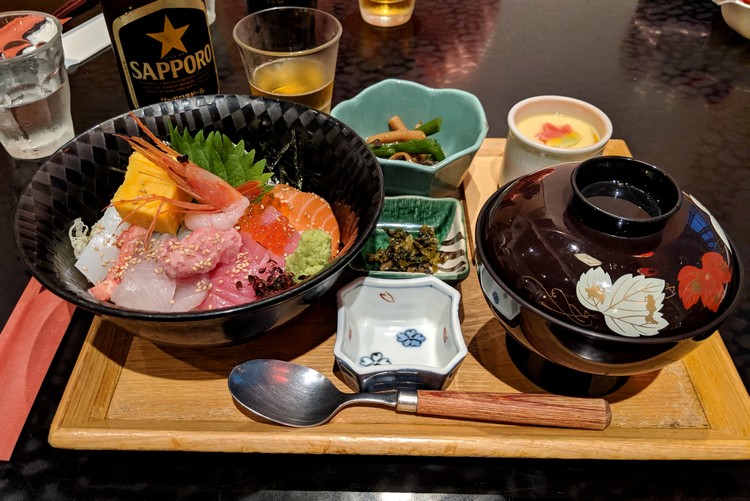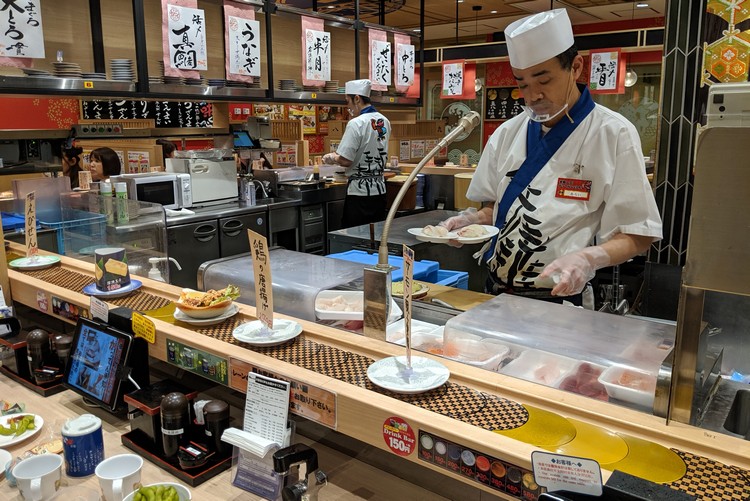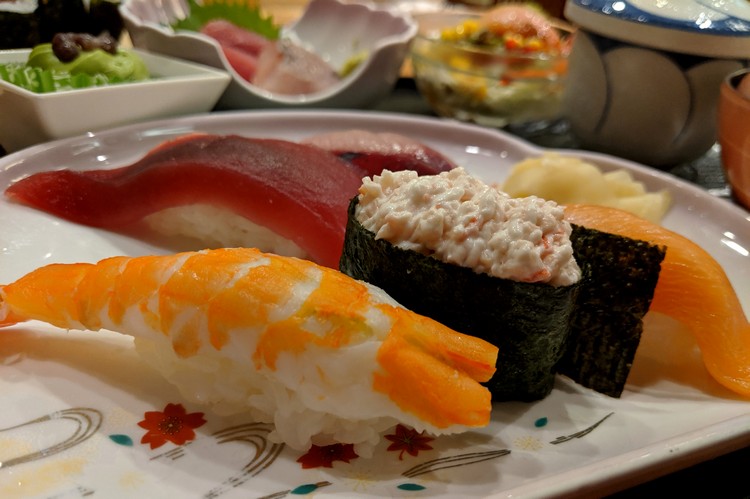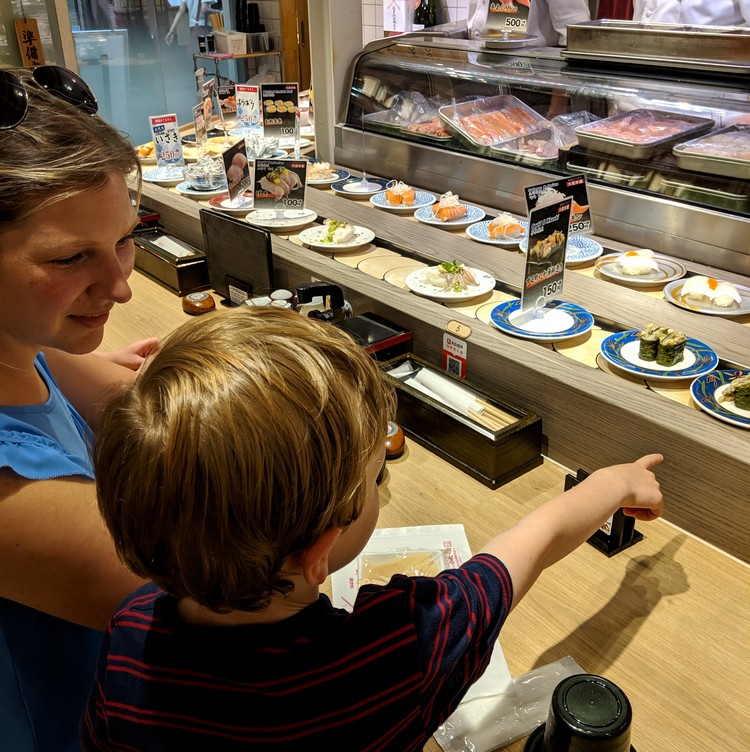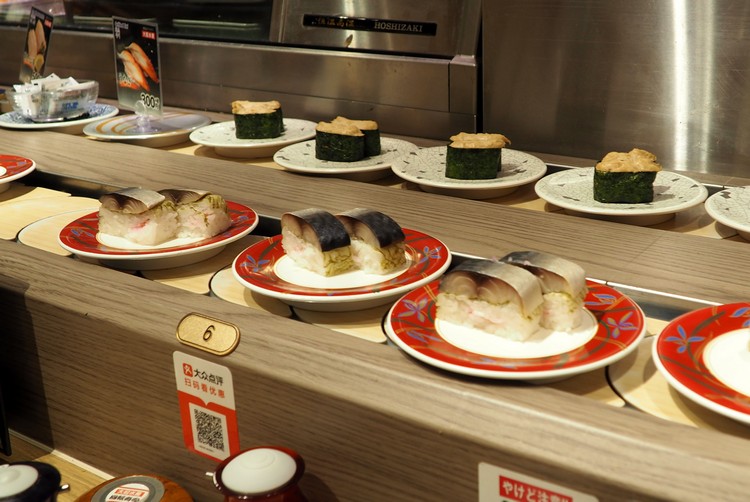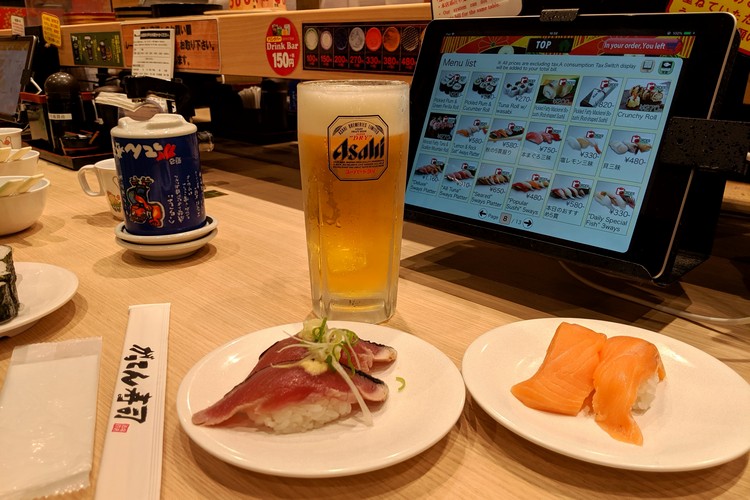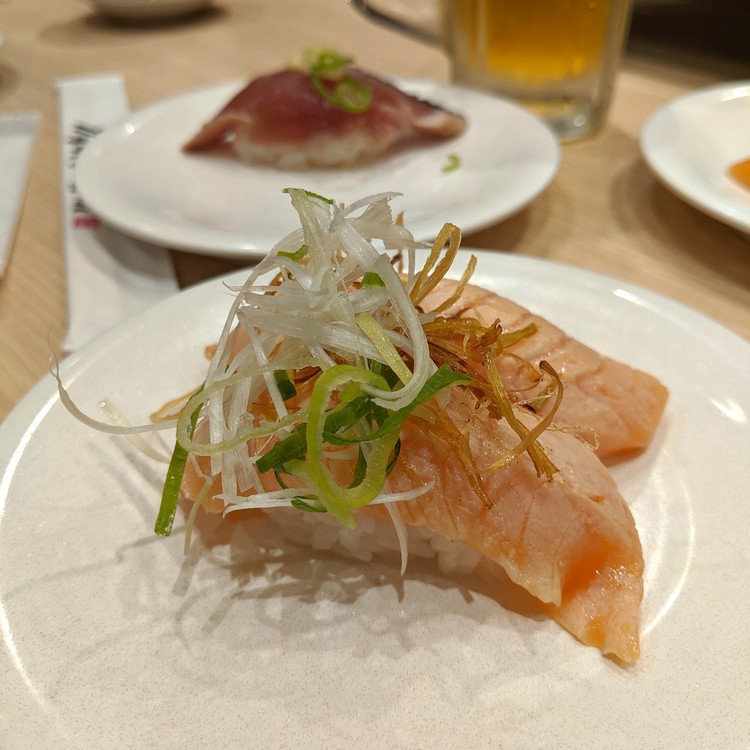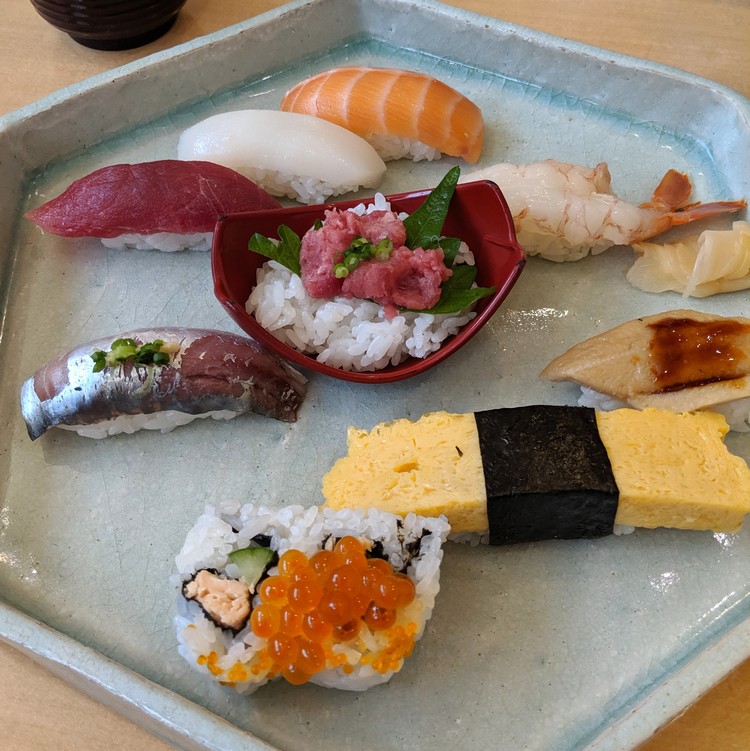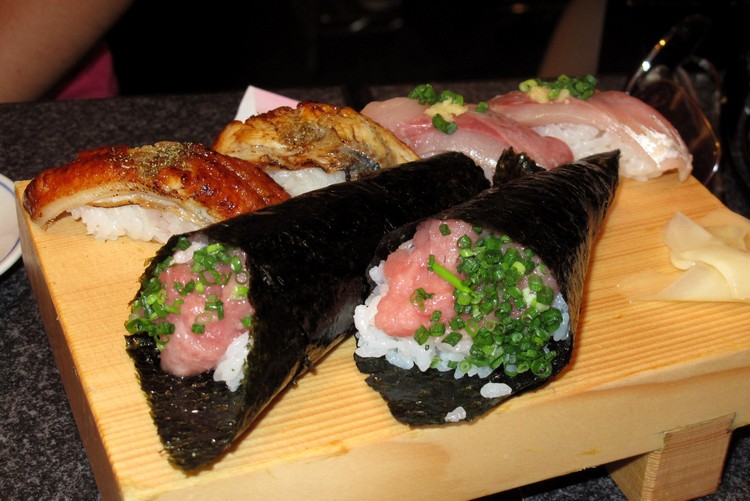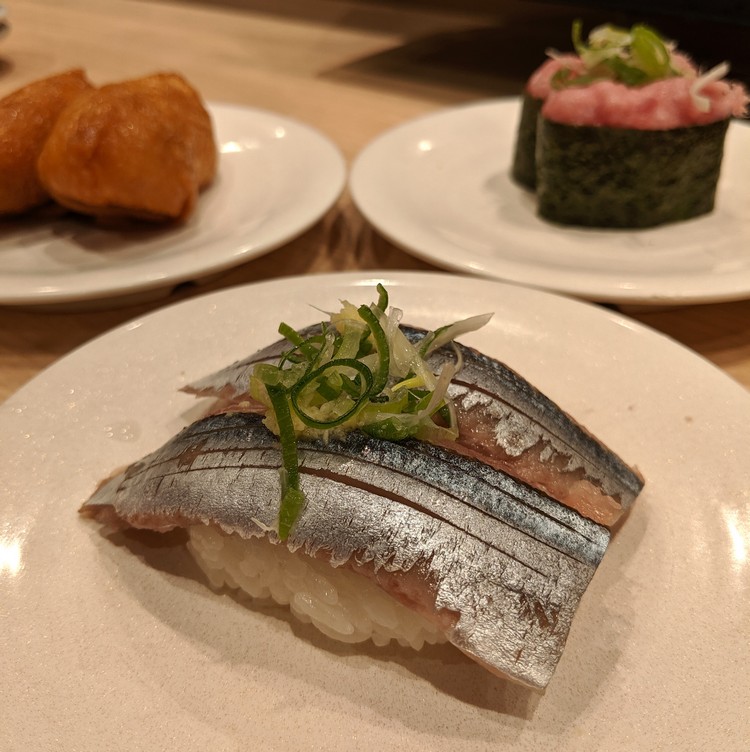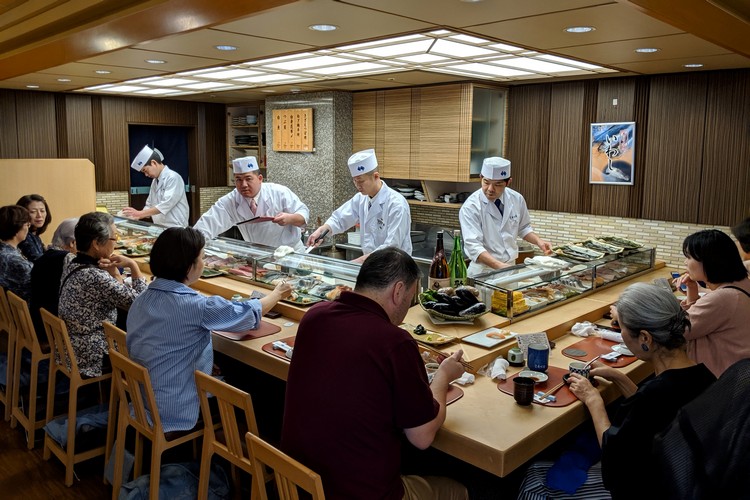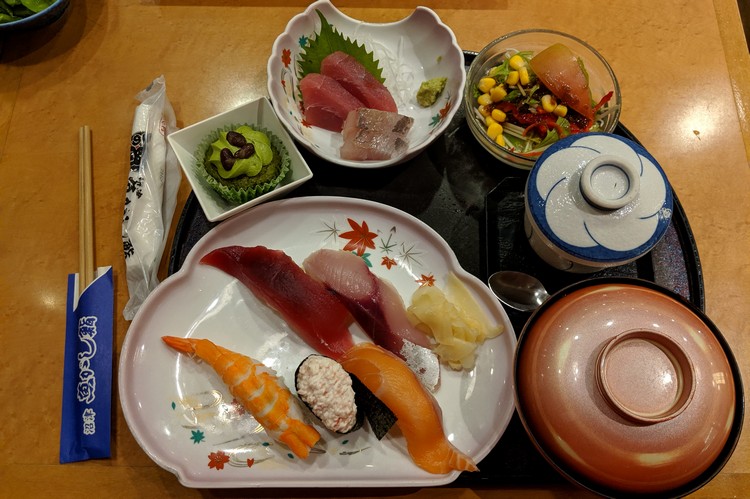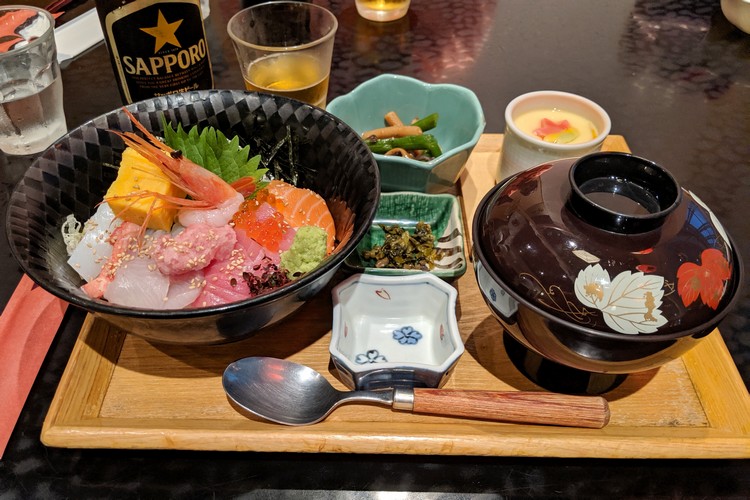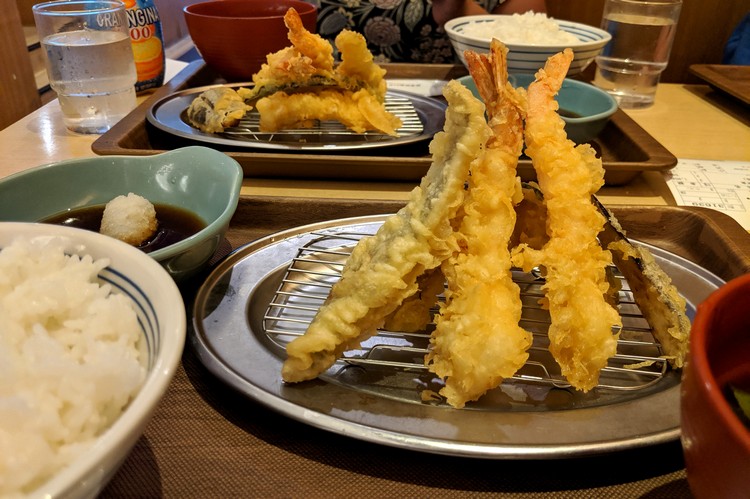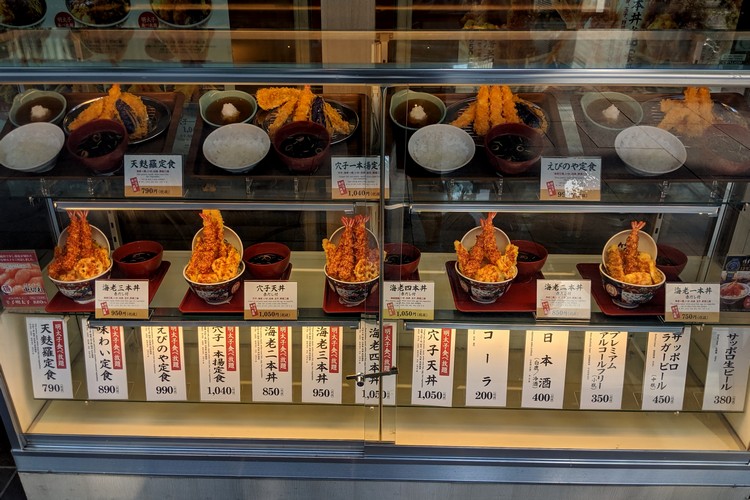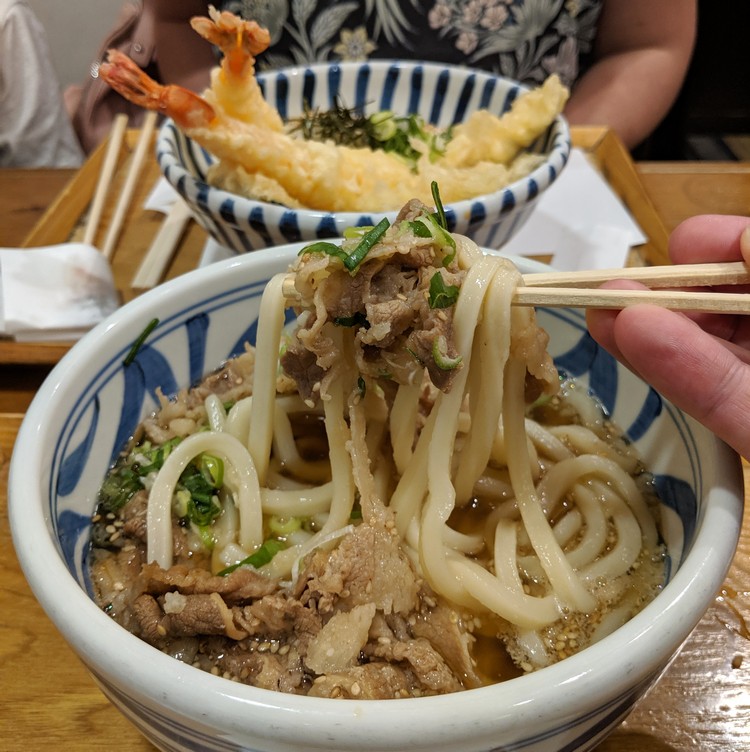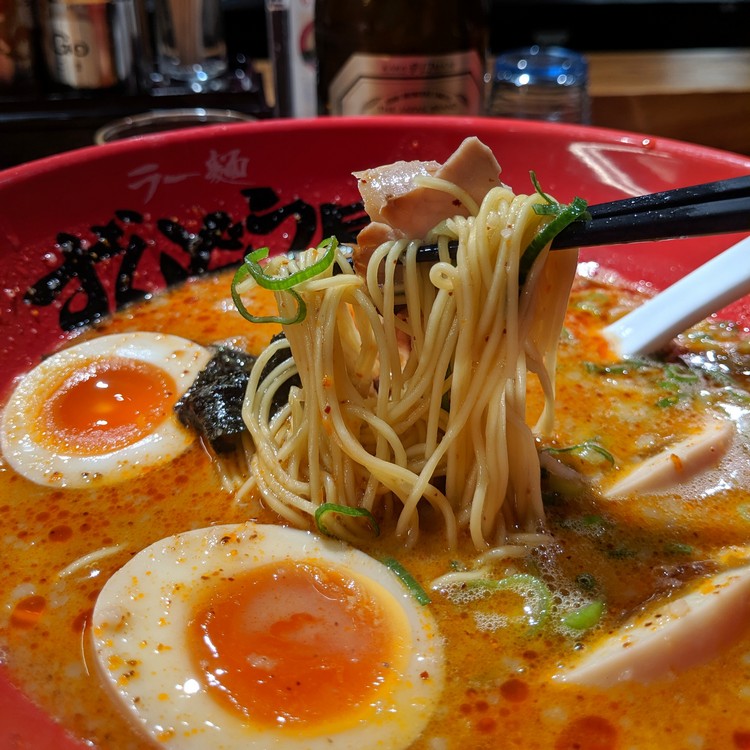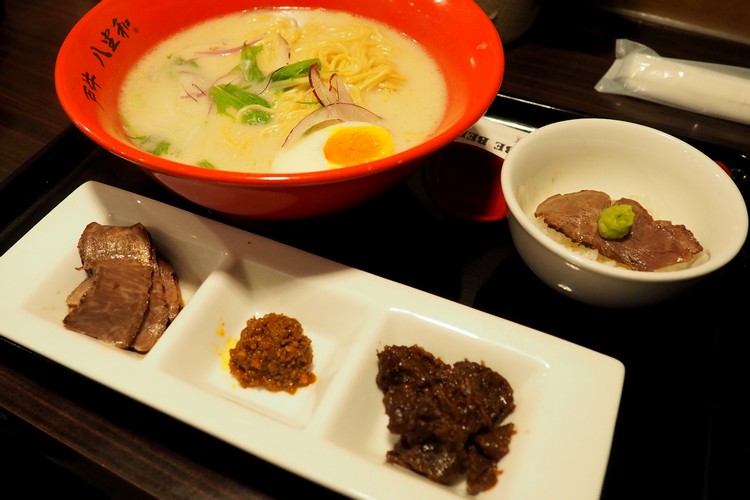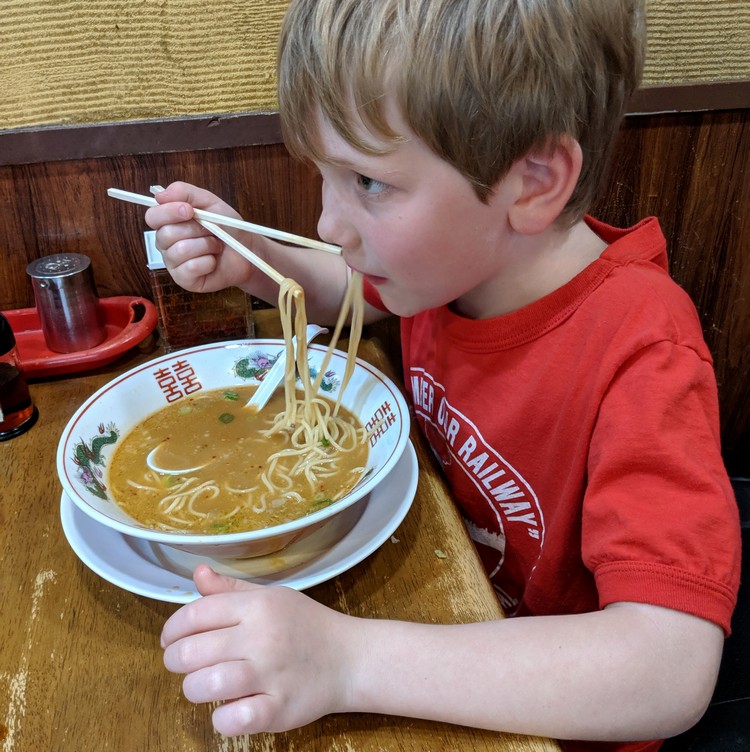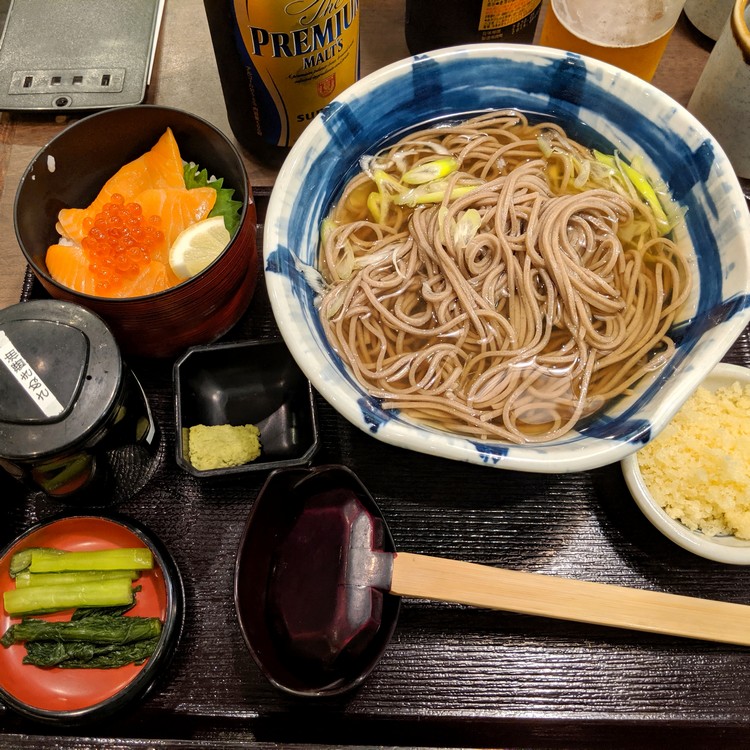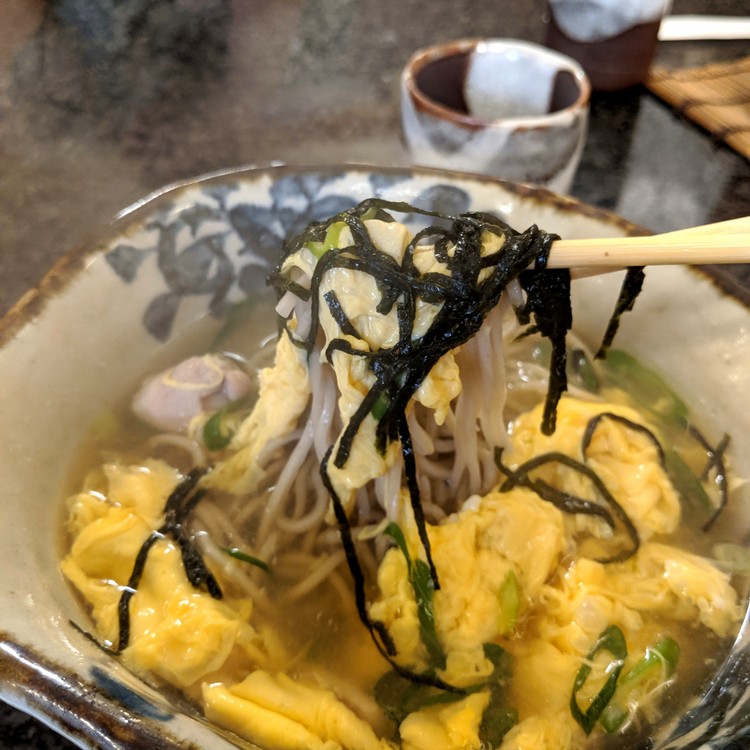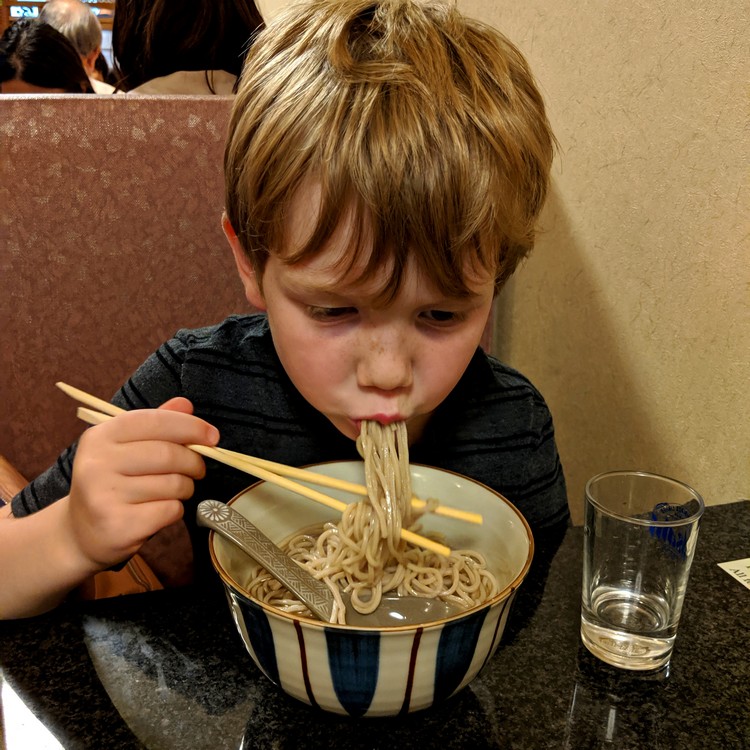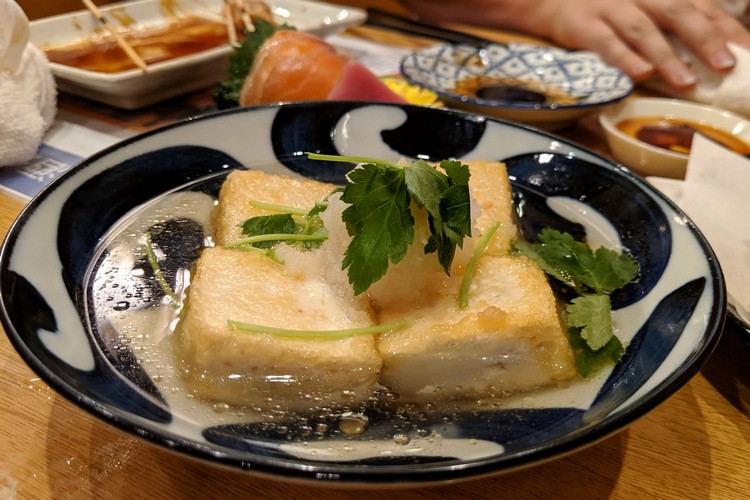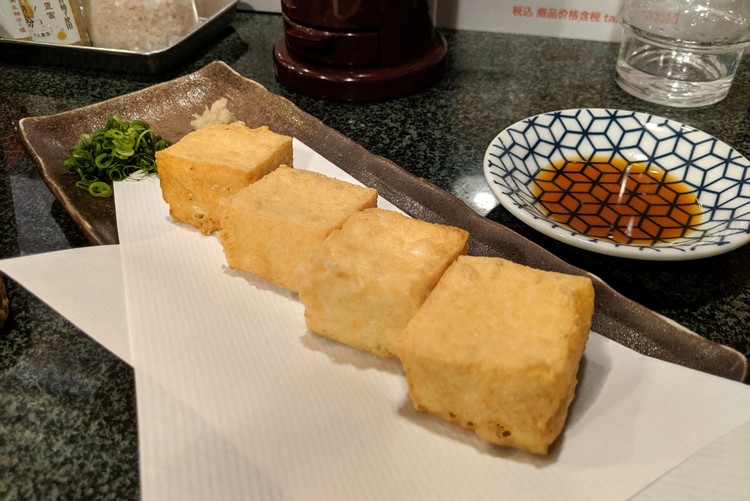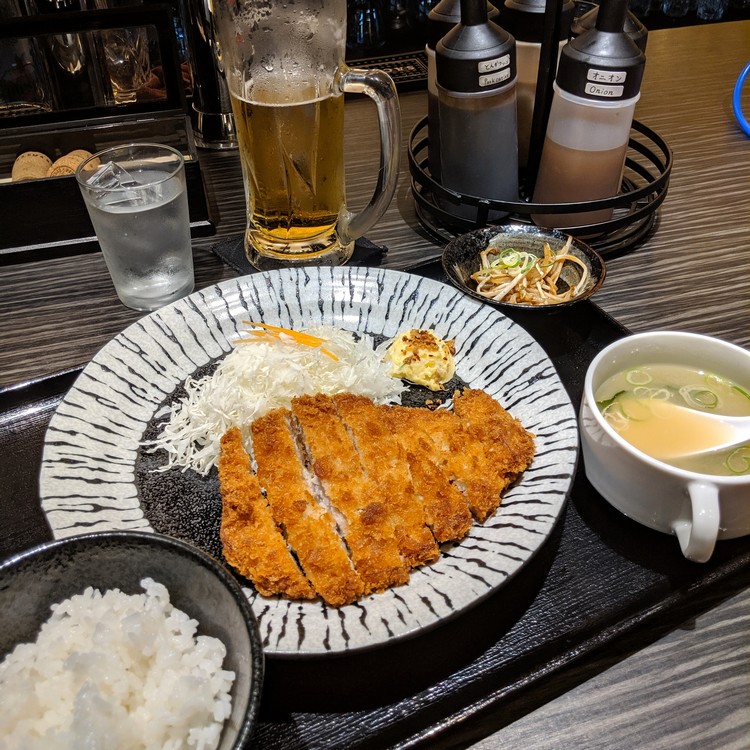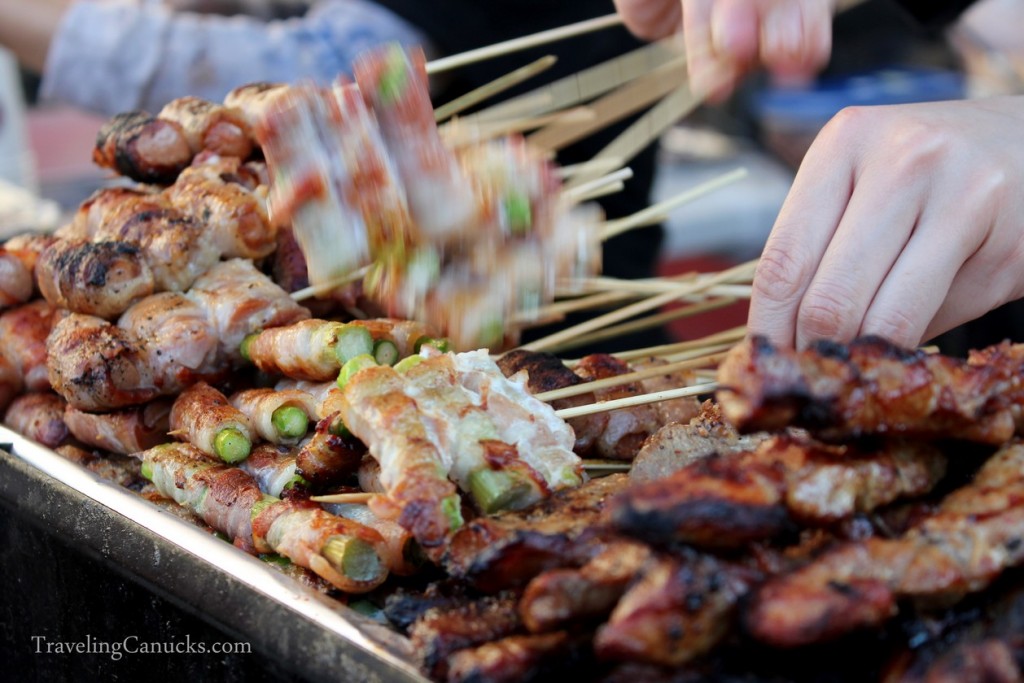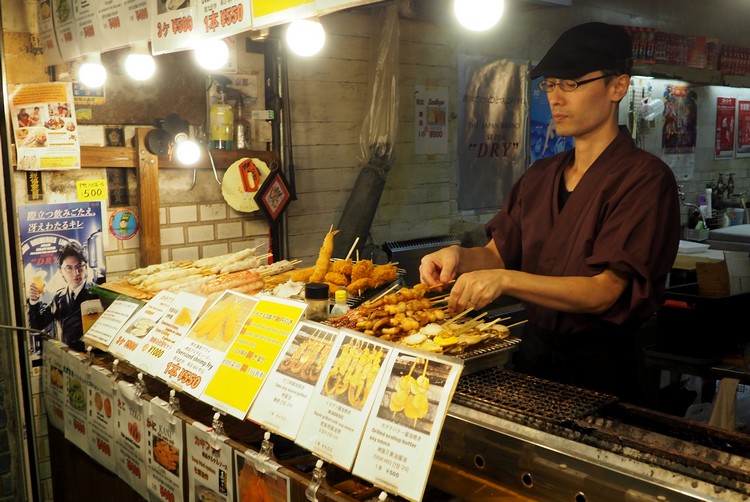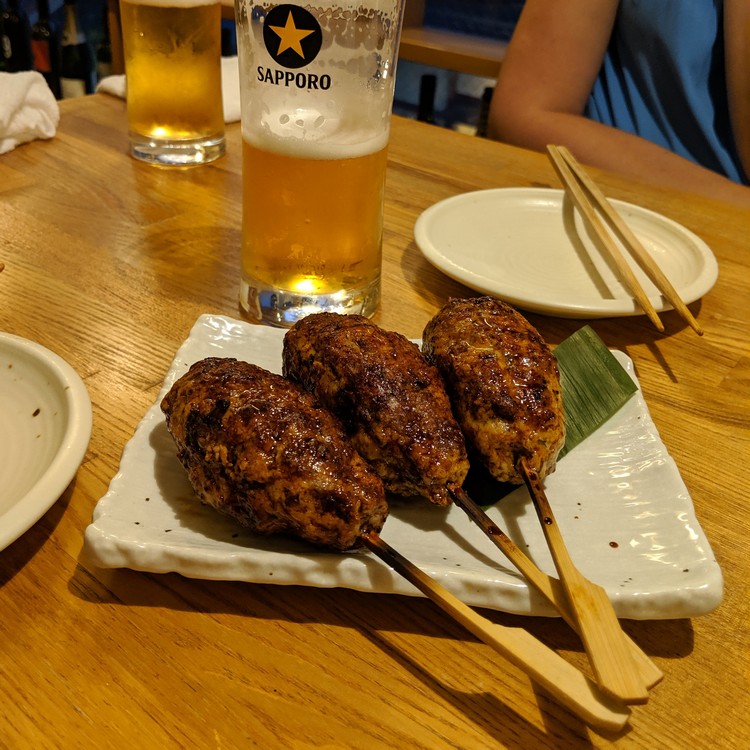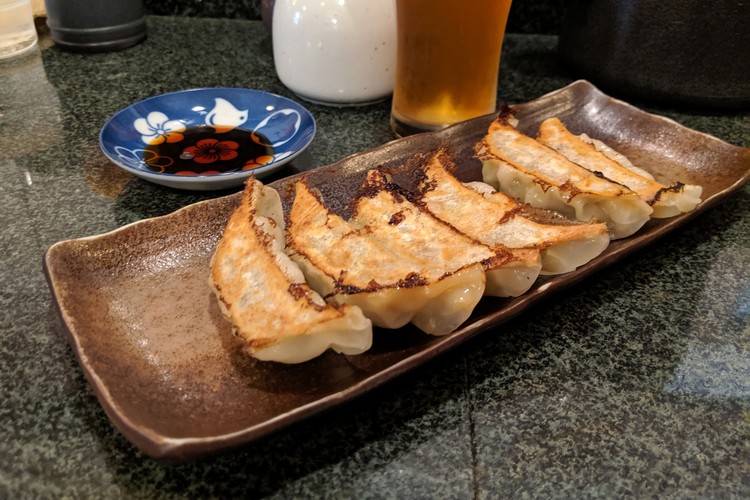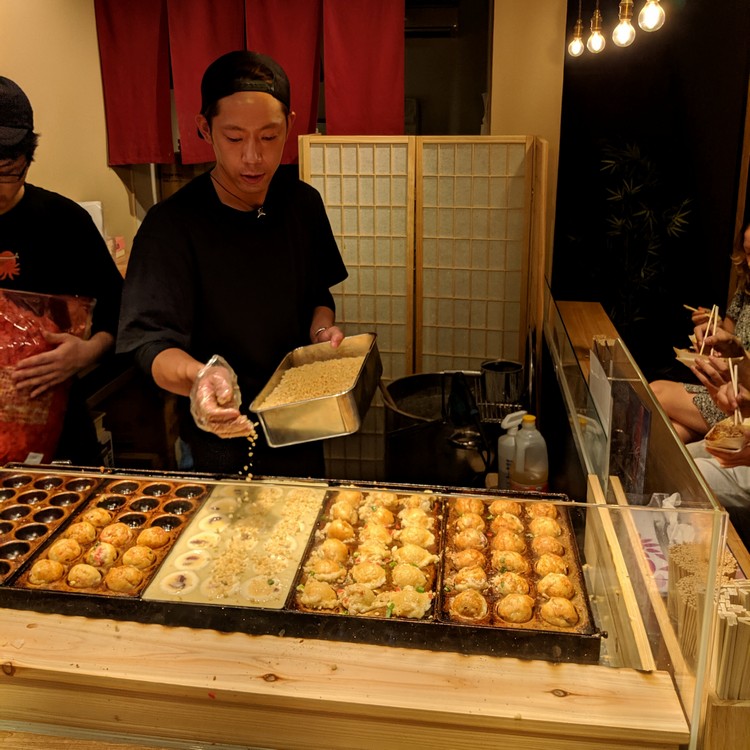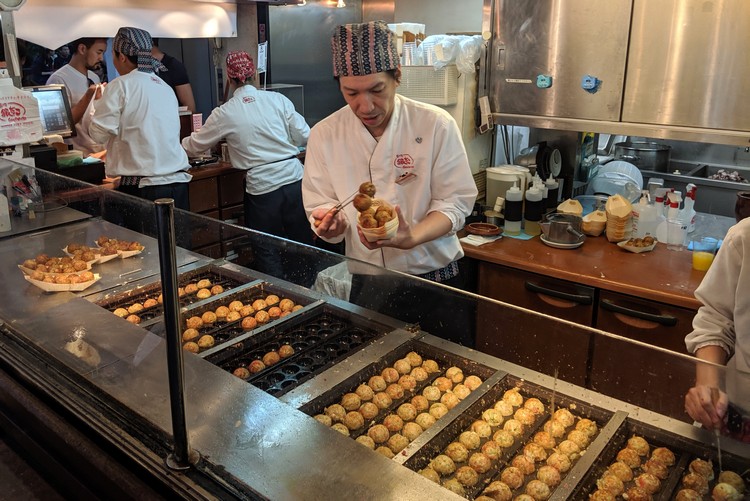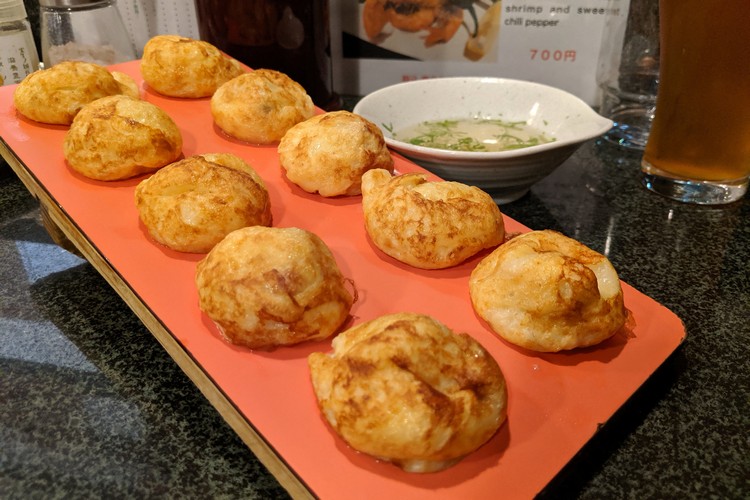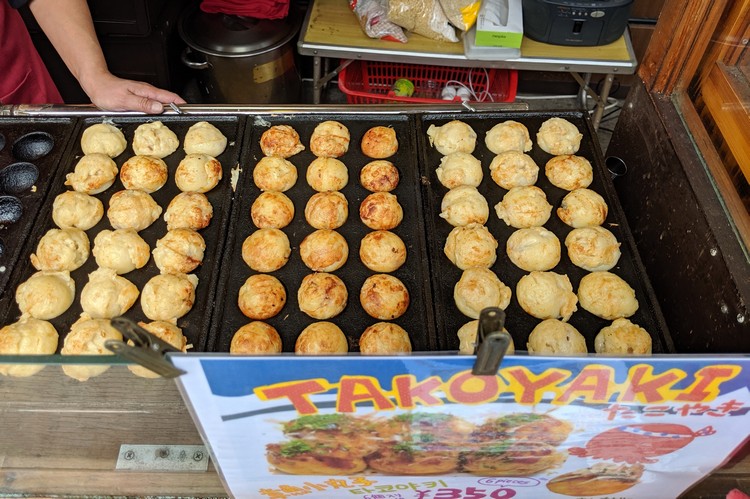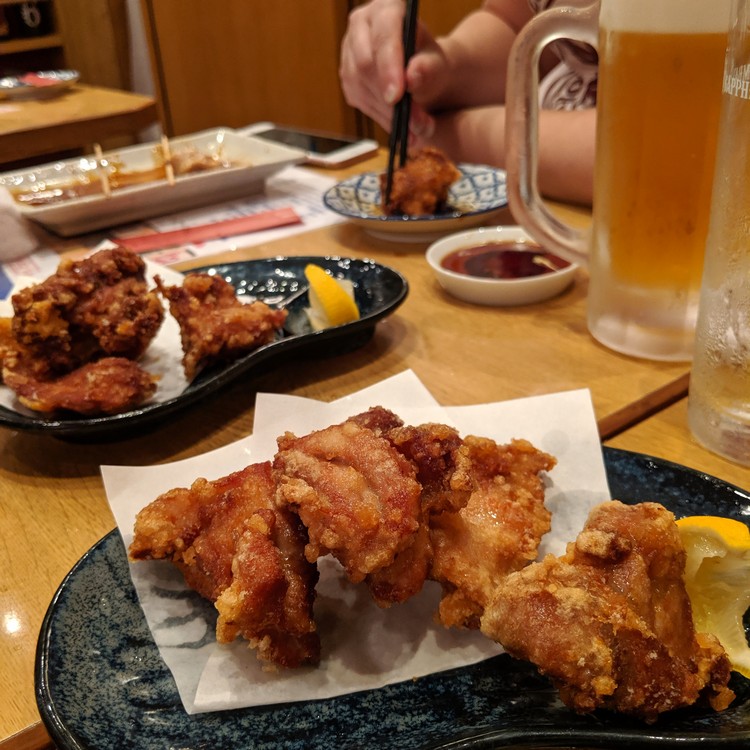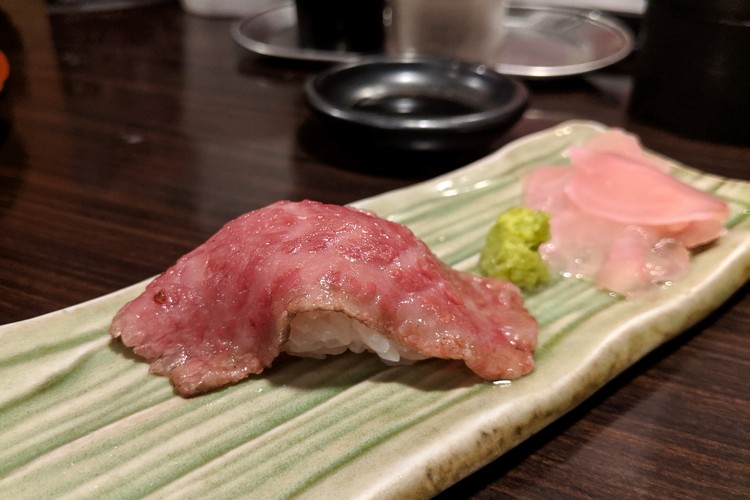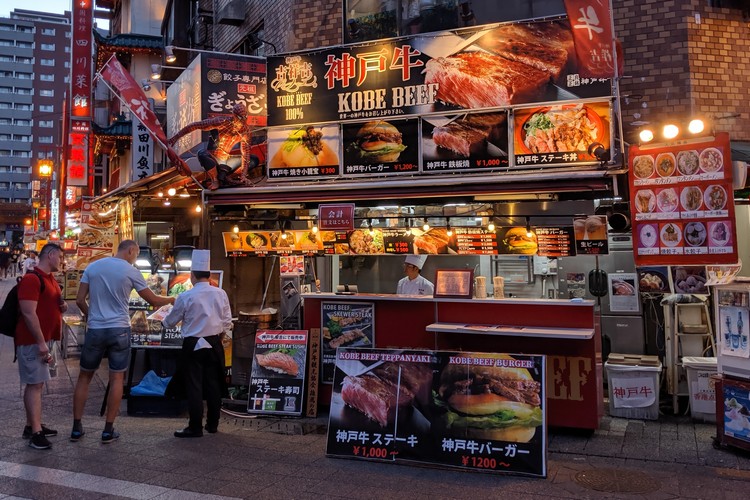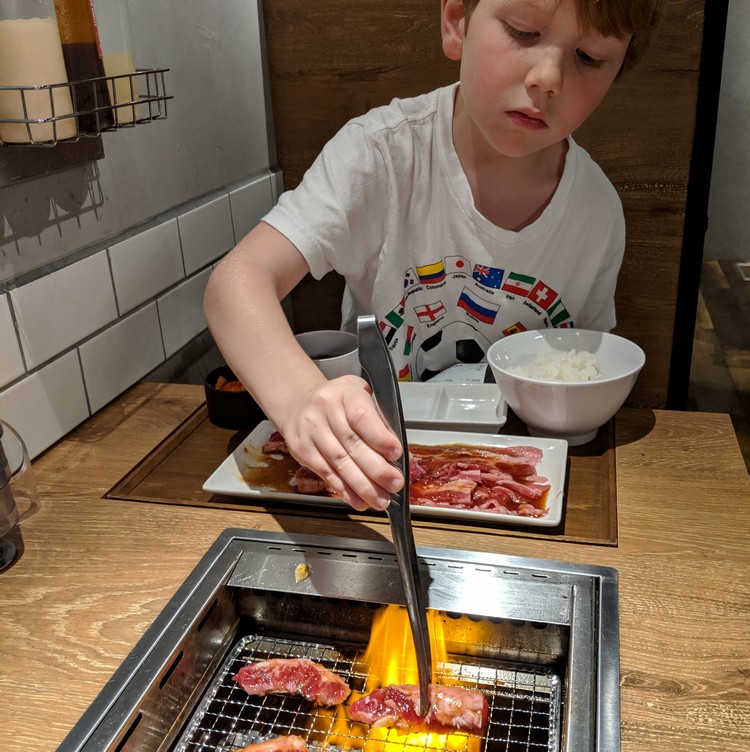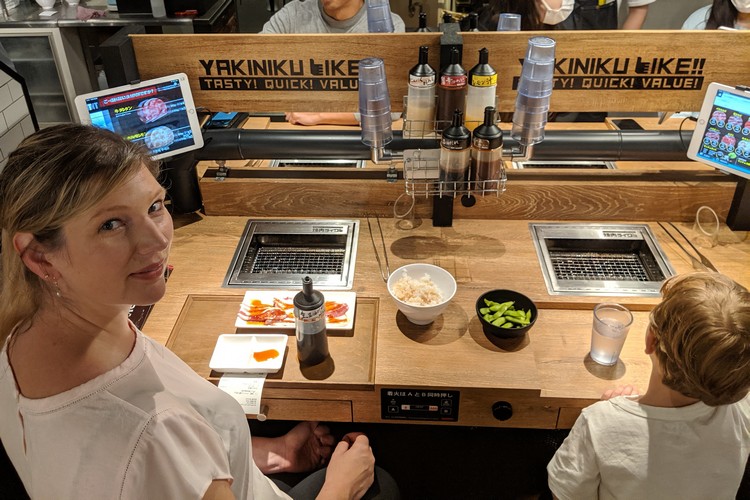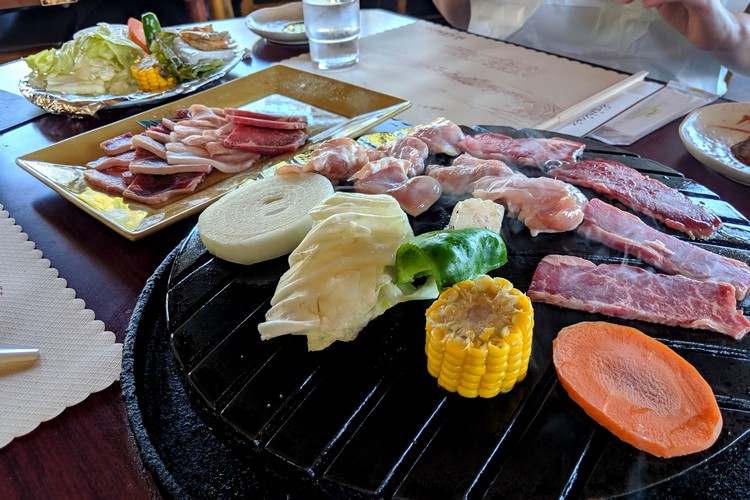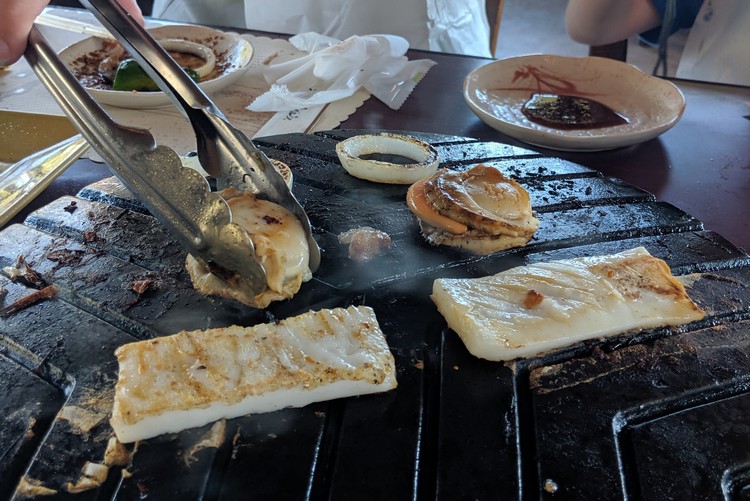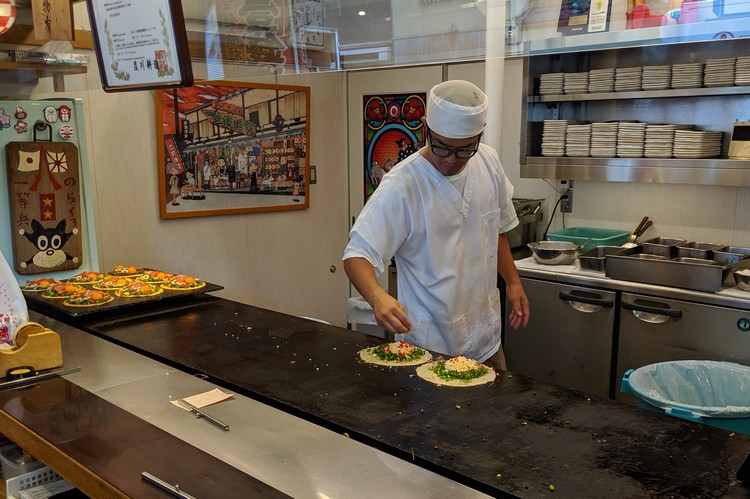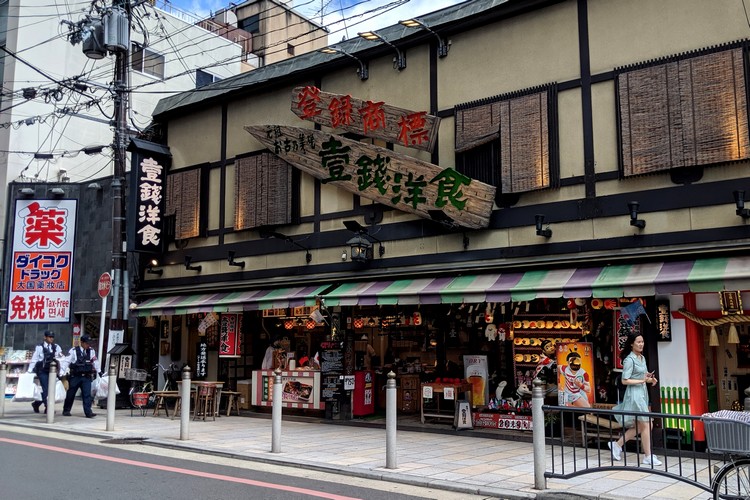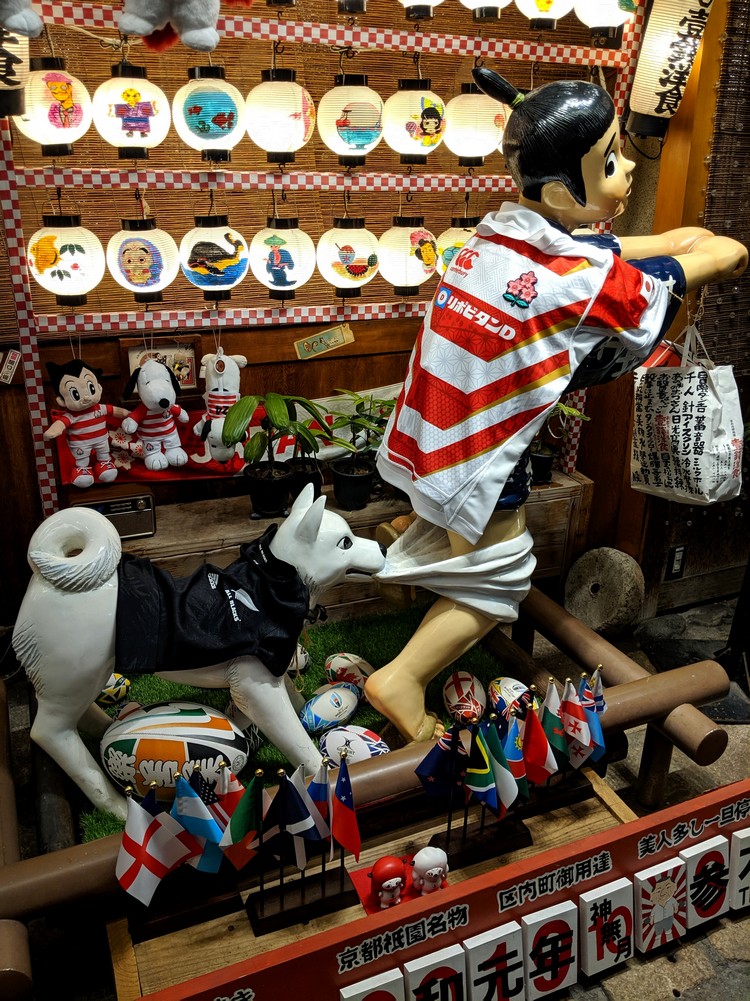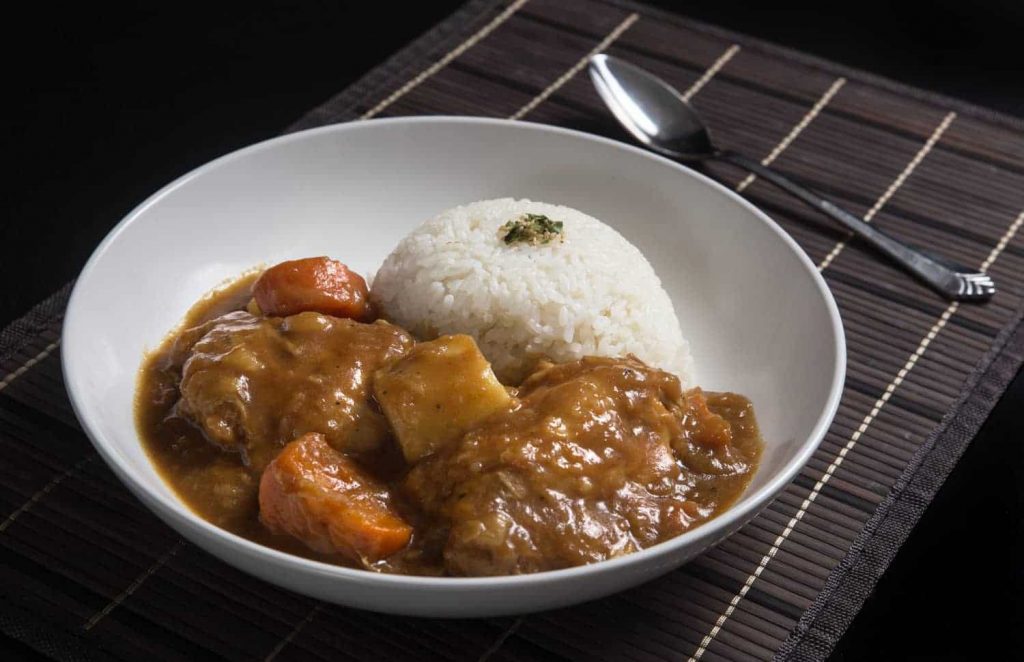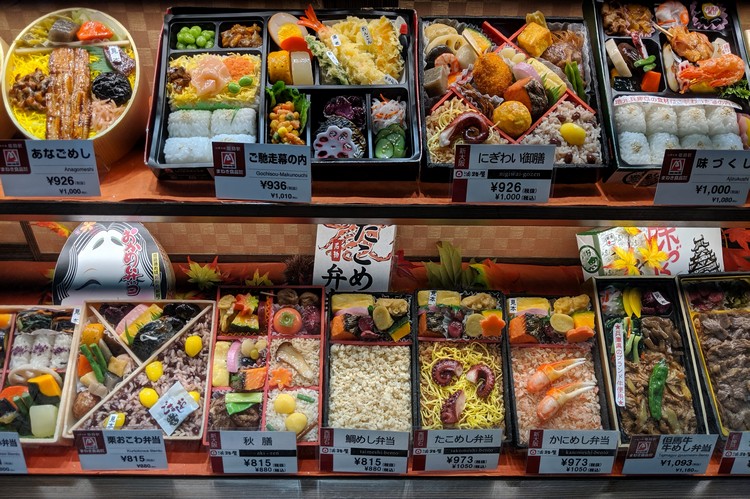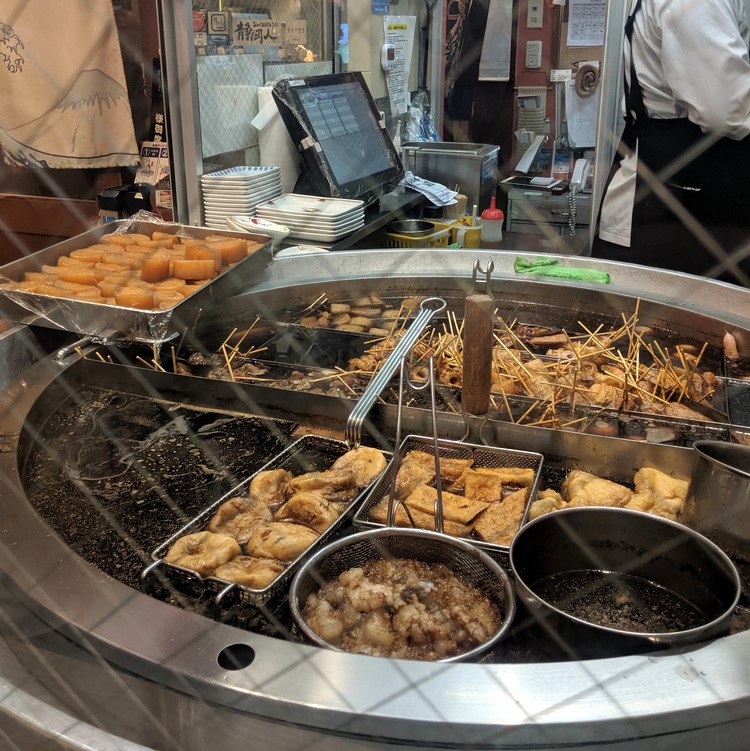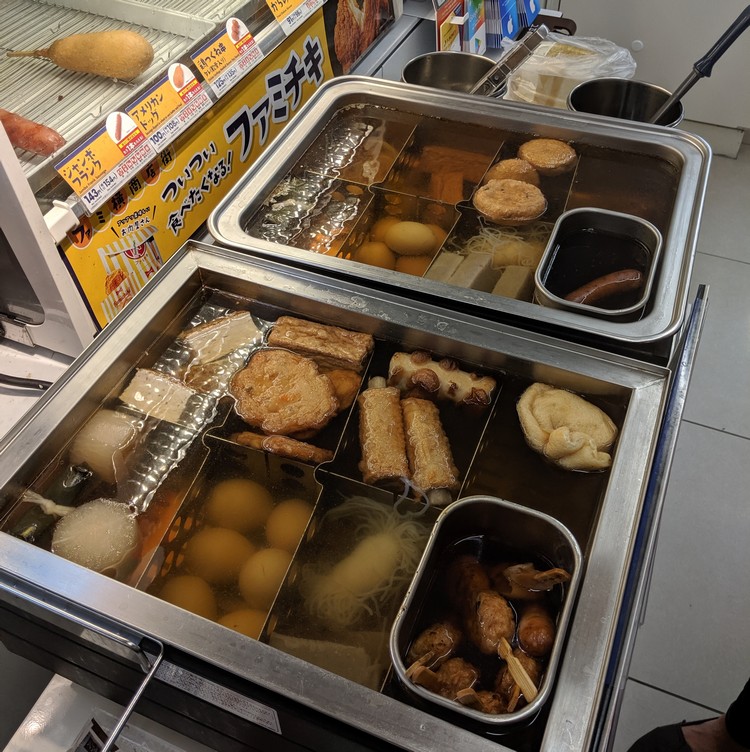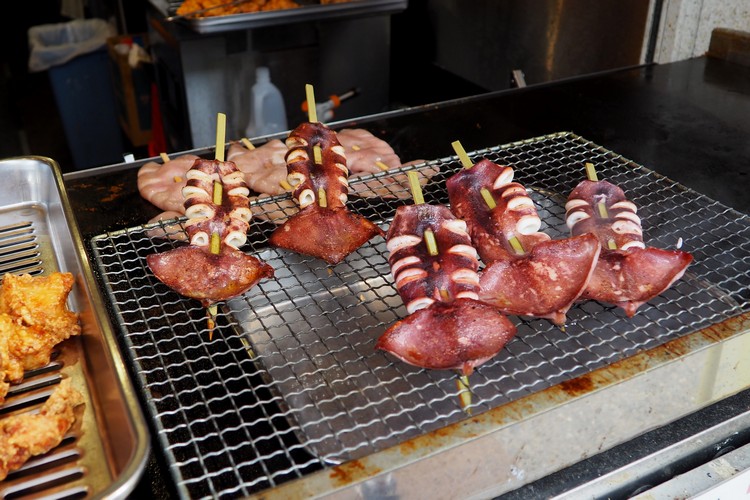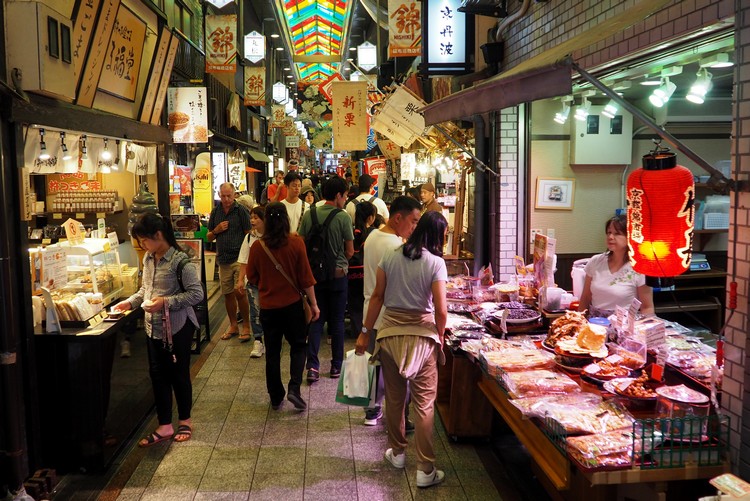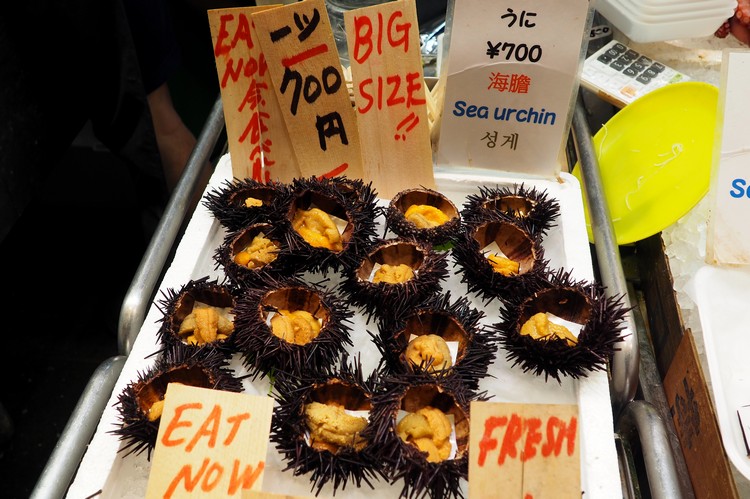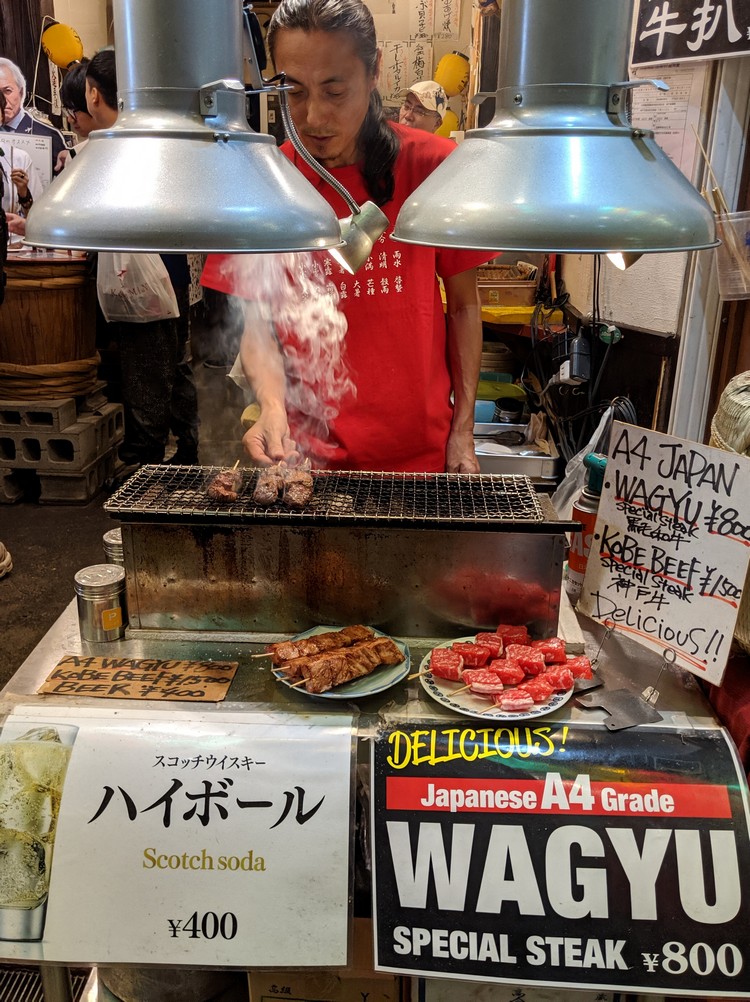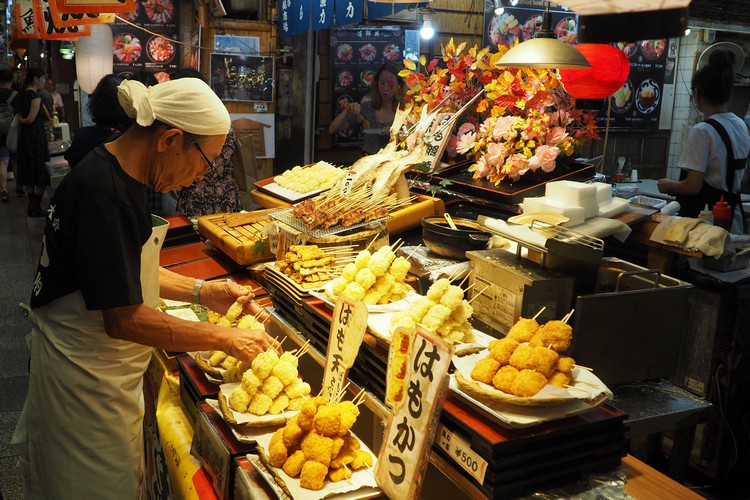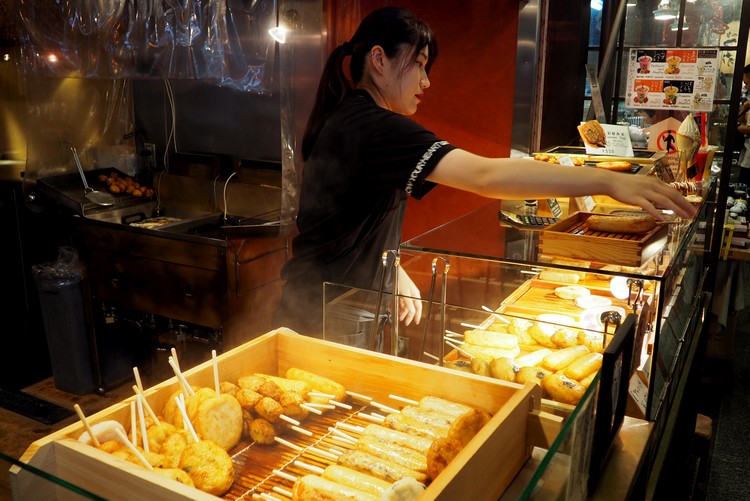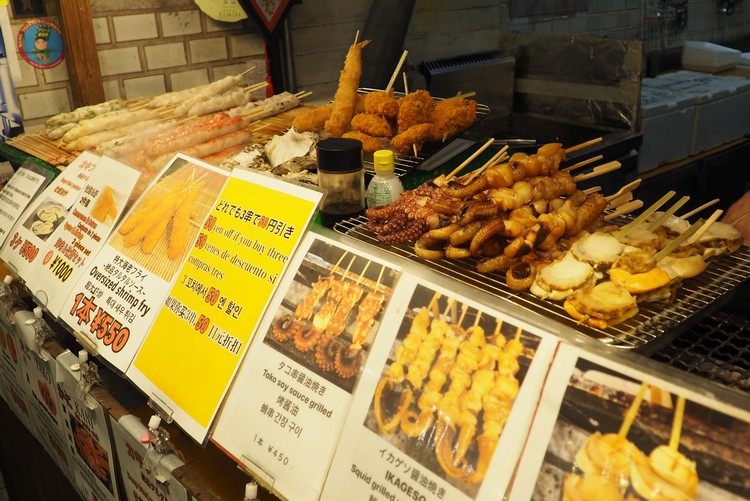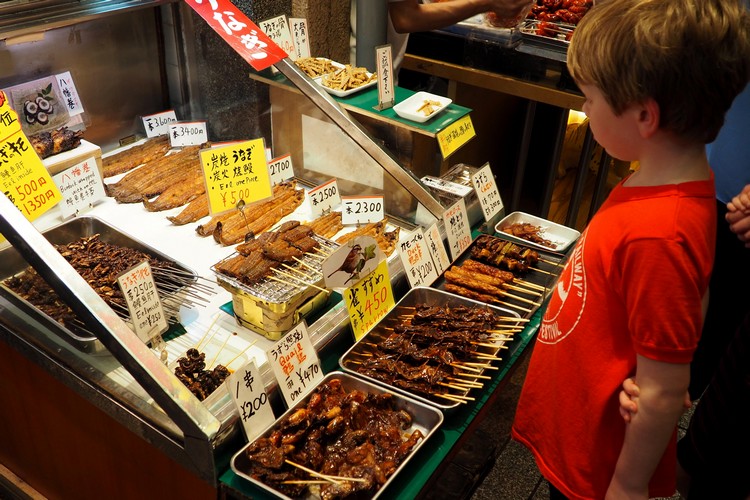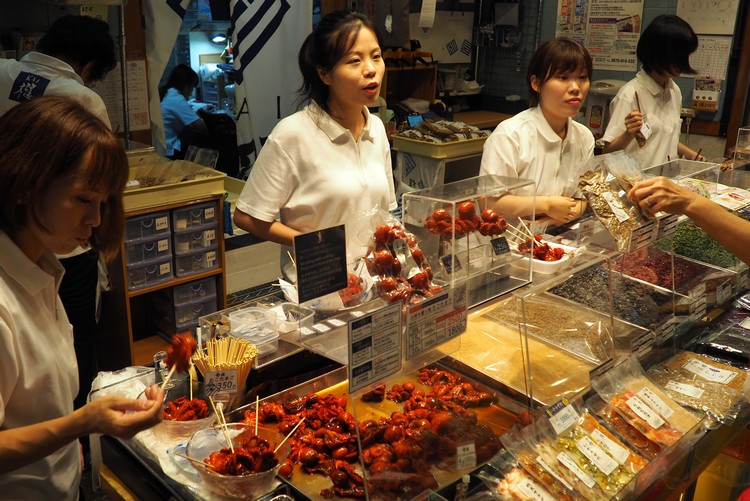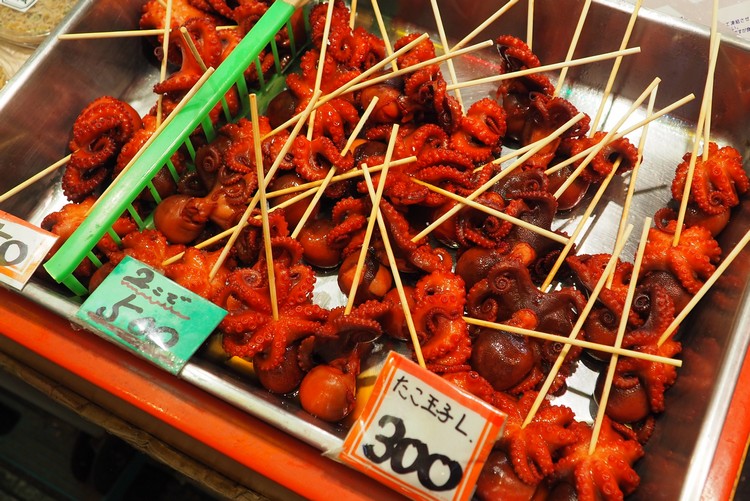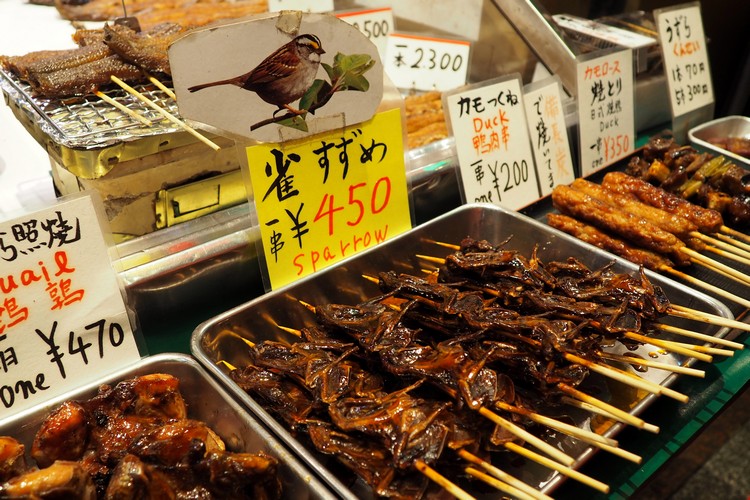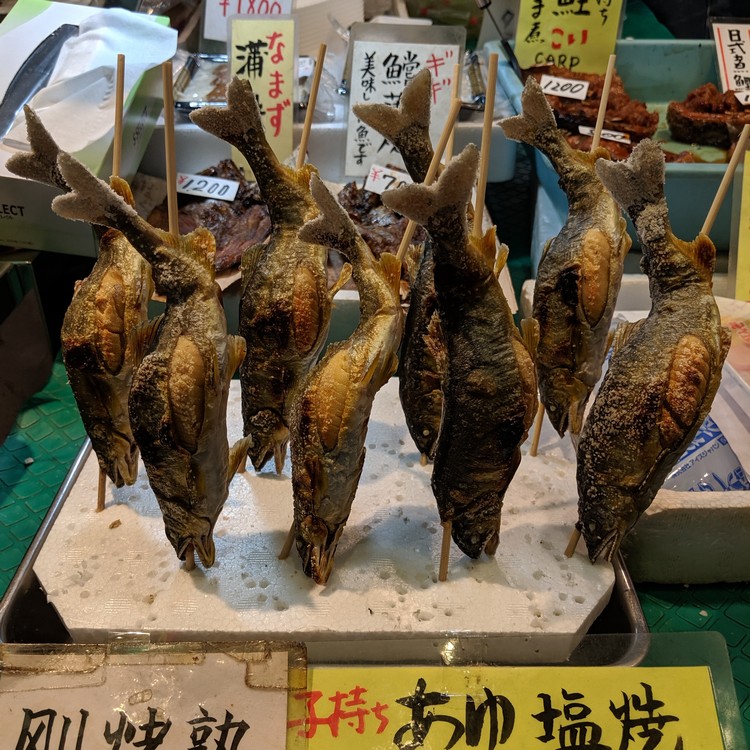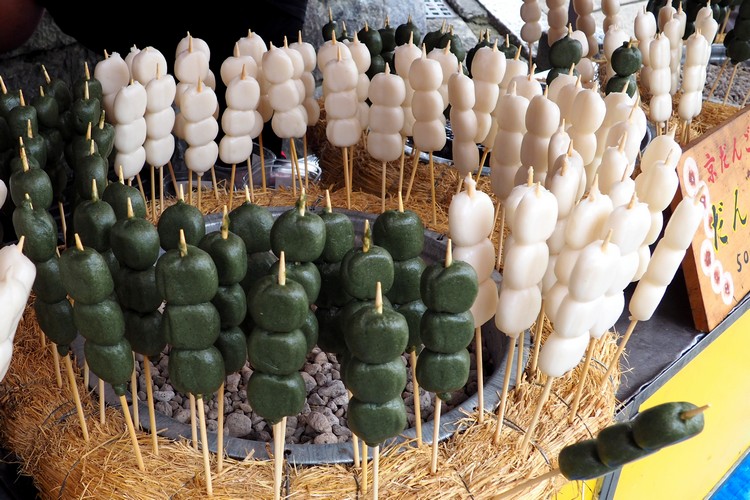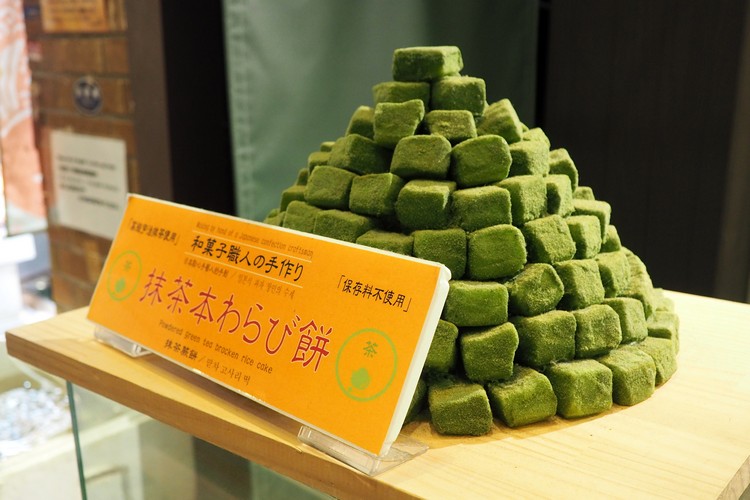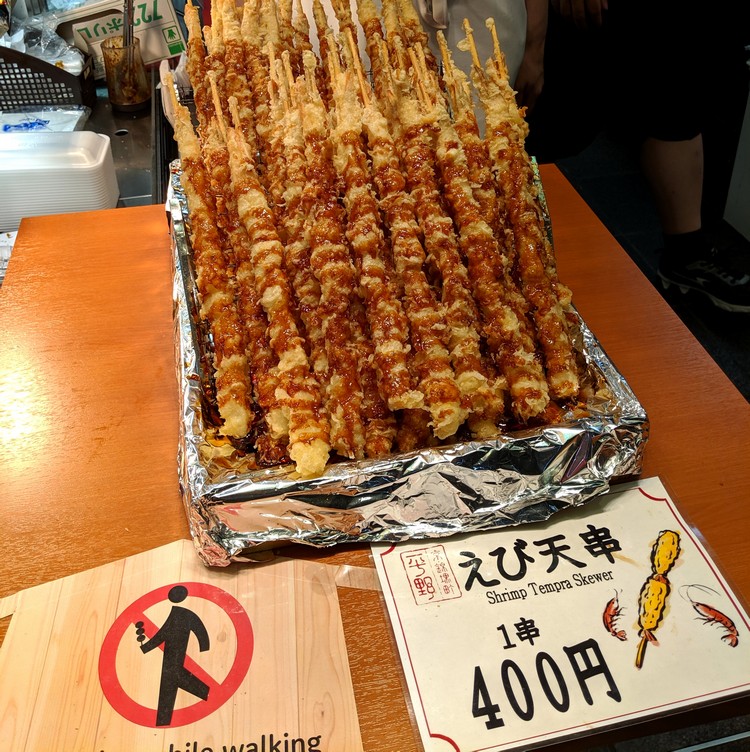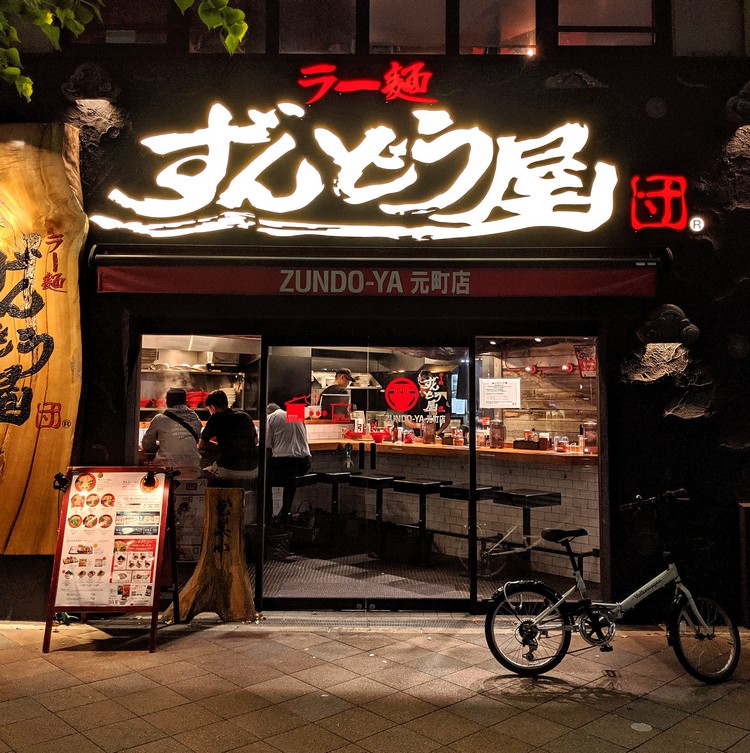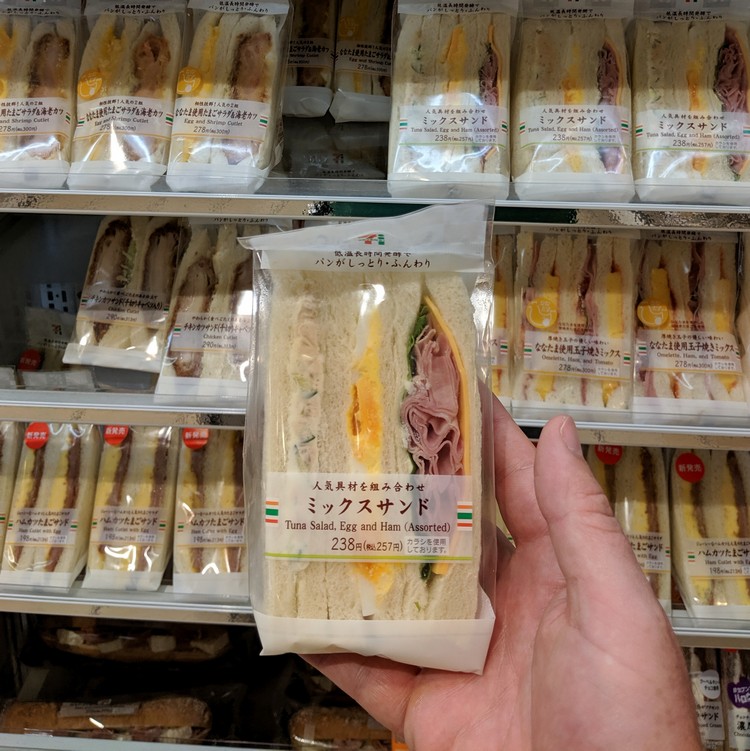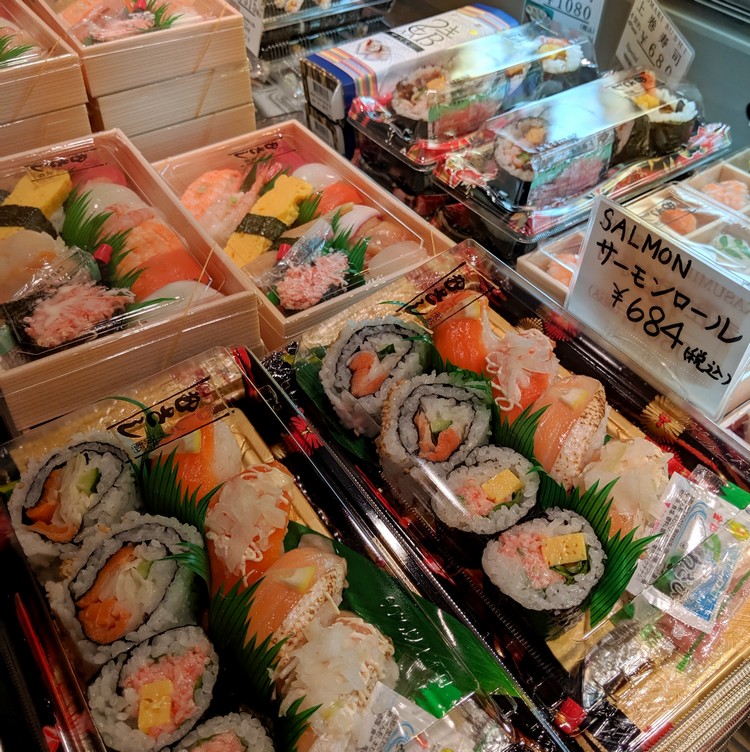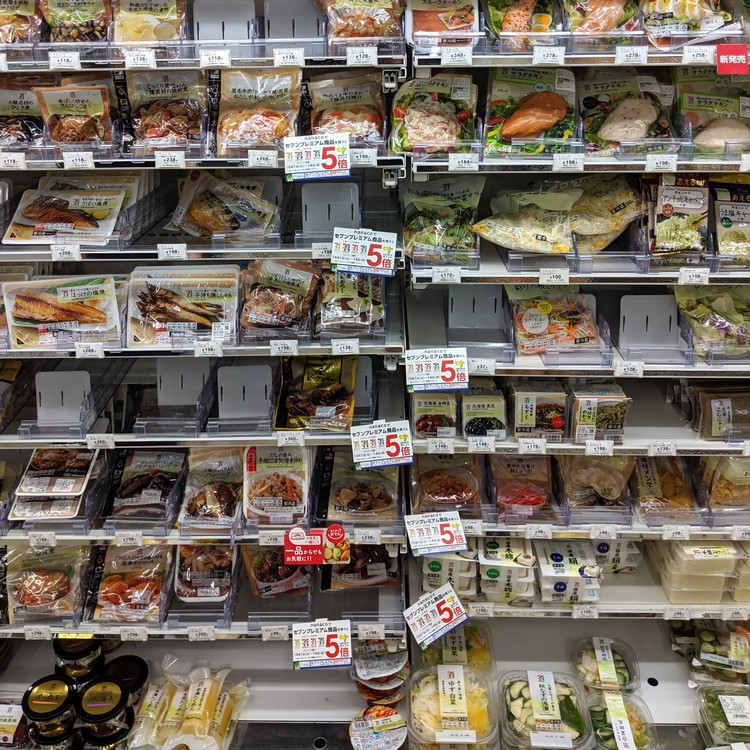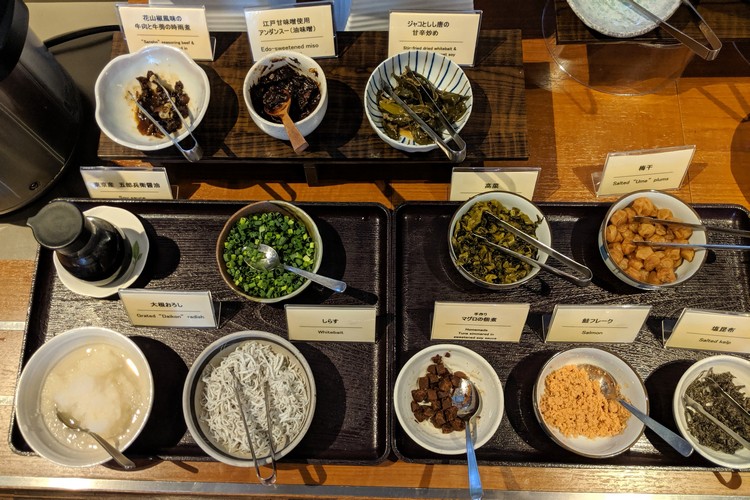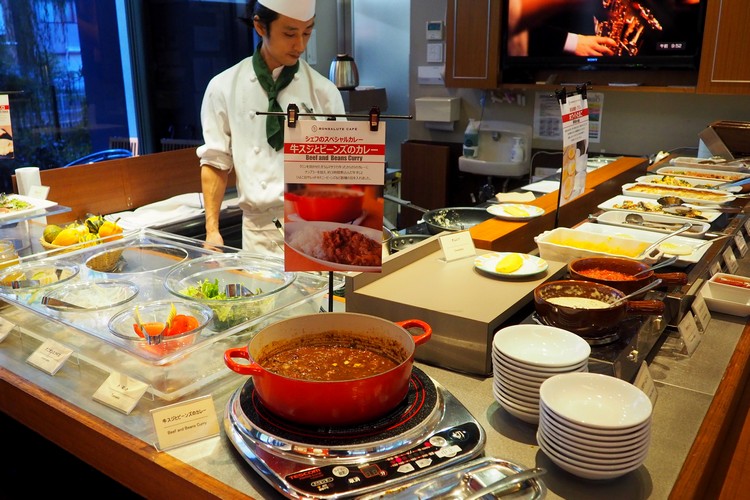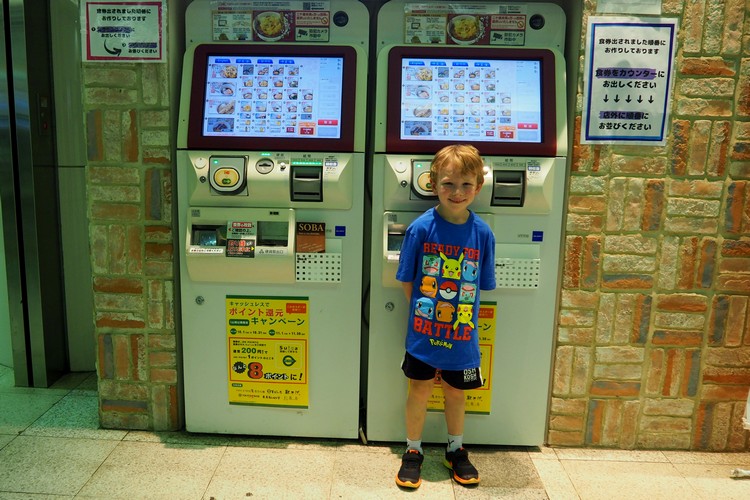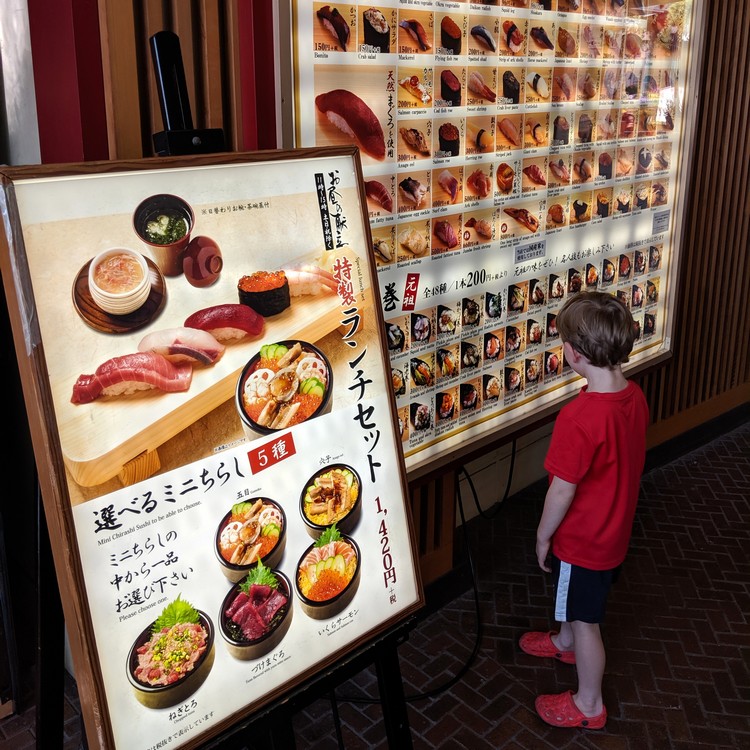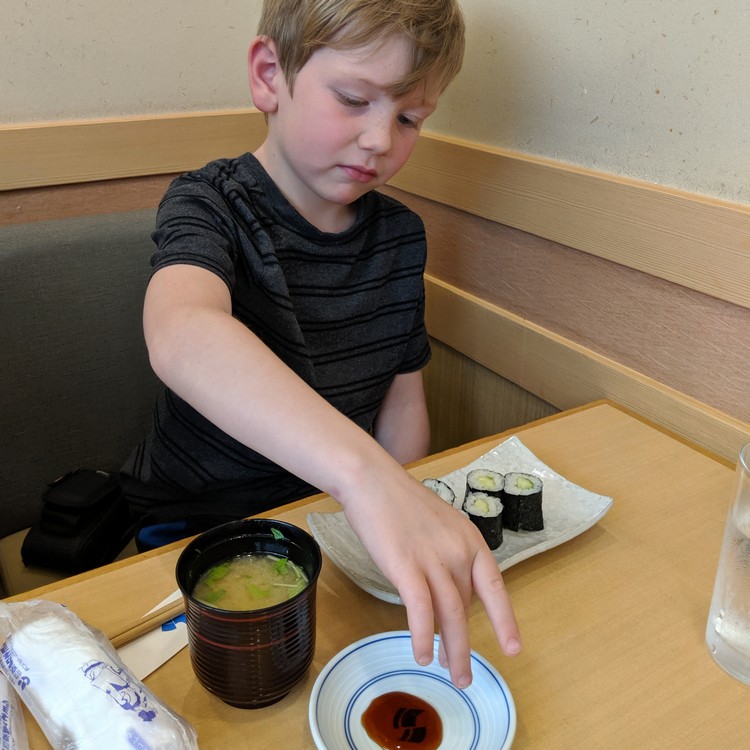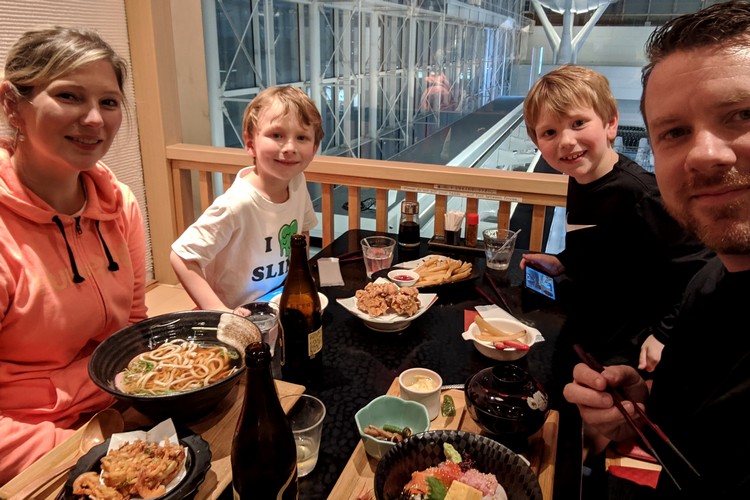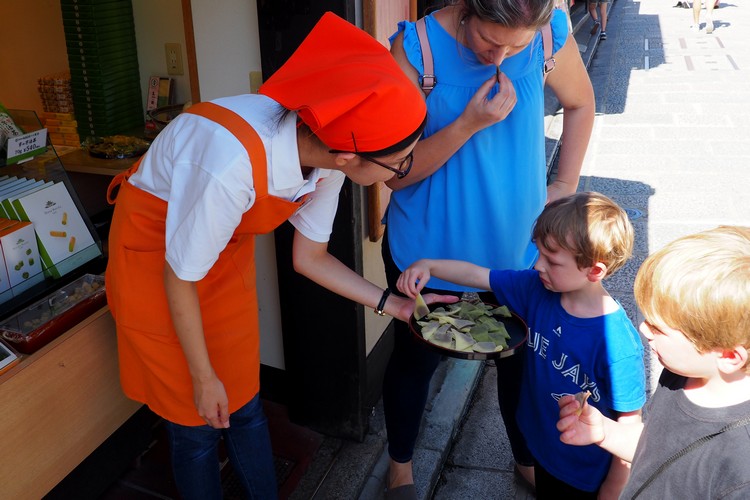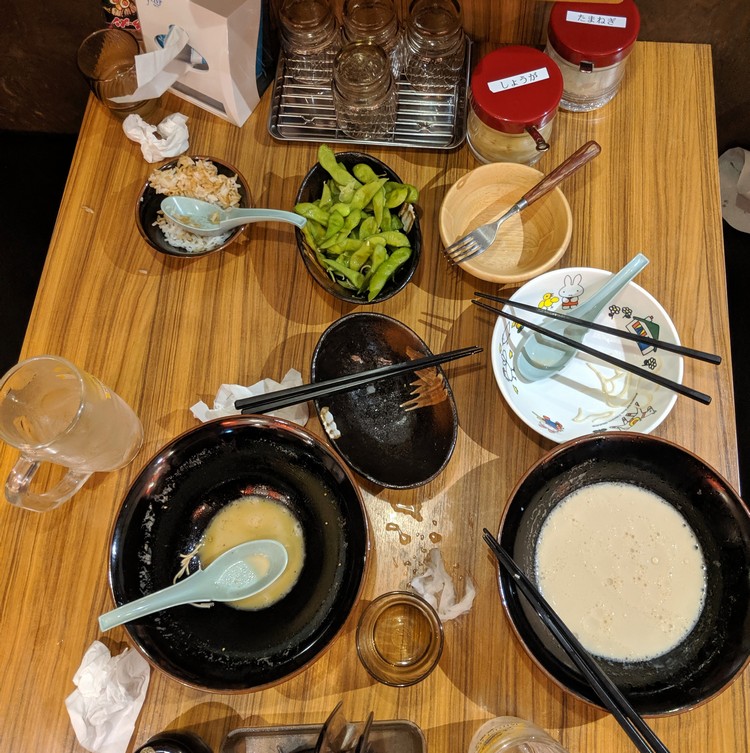Beginners Guide to Food in Japan for first time visitors
Japan’s unique and diverse cuisine can be intimidating for first time visitors. Unadventurous eaters might experience a little anxiety when thinking about ordering Japanese food in Tokyo for the very first time. If you find yourself in this category, we’ve got you covered with this beginners guide to food in Japan.
We would argue that food is the reason to visit Japan.
However, for those unfamiliar with Japanese food culture, the idea of eating at restaurants in Japan might feel daunting. What do you order? How do you order? Do you tip in Japan? I remember feeling quite confused on our first trip to Japan; not being able to read Japanese characters didn’t help.
Thankfully, it didn’t take long before we started to feel comfortable.
We quickly turned our anxiety into curiousity. Sure, we sampled a few items that we will likely not order again (I’m talking to you, horumonyaki), but we also discovered new foods and flavours that have forever changed our palate.
Most restaurants in high traffic areas will have food photos on the menu, plastic replicas in the windows, and/or English menus; so you’ll be fine even if you can’t read, speak or understand Japanese.
Skip ahead using the Table of Contents
In this blog post, we provide an overview of the variety of Japanese food that you can expect as a first time visitor to Japan.
Read more posts from Japan
Let’s start with the most popular food in Japan for tourists
Given that this post is written with the first time visitor in mind, let’s start with the most popular Japanese cuisine for tourists. Below is a detailed list of Japanese food you should try in Japan.
1. Sushi
Sushi is arguably the most famous food in Japan. At least, it is for tourists.
Without question, sushi is a big part of Japanese cuisine. You will find a variety of sushi shops in Japan, so you will have plenty of options.
If you’re not familiar with sushi, the thought of eating raw fish wrapped in thin sheets of seaweed might feel completely foreign and unsettling. You might even think that eating sushi is a big stretch for you. That’s okay, you’re not alone.
I think most people remember the first time they tried raw fish.
I know I do. It was a tuna sushi roll (tekka maki) at a small Japanese restaurant in North Vancouver. I had a mental block that prevented me from embracing the concept of raw fish. I wasn’t a fan of the texture or flavour, but it wasn’t as bad as I had built it up in my mind.
Now, years later, I can’t get enough sushi. I’m pretty sure we eat sushi at least once per week.
As one might expect, sushi tastes better in Japan. The fish is fresh and tasty and the sushi is prepared with a meticulous precision.
Travel tip – visit a Japanese restaurant in your hometown before you travel to Japan. Familiarize yourself with the menu and sample a few items. Let your curiousity run wild. This way, you have the advantage of reading the menu in English. Once you’ve seen and tried a few items, you’ll be much more comfortable with the food in Japan.
What sushi should you try first?
Sushi refers to any dish made with Japanese rice that’s seasoned with rice vinegar.
Sushi rolls are called maki or makizushi. Fresh fish and/or vegetables are wrapped with Japanese rice and a dried seaweed sheet (nori). The most common sushi rolls in Japan are salmon rolls, tuna rolls (tekka maki), unagi (freshwater eel), cucumber (kappa maki), fermented soybean (Natto Maki) and futomaki sushi rolls.
Here is list of useful sushi terms you should know before your visit to Japan.
Nigiri sushi are bite-sized mounds of sushi rice topped with slices of raw fish. The most popular nigiri sushi are sliced tuna, salmon, freshwater eel, squid and prawn. However, there are endless types of nigiri sushi available at Japanese sushi restaurants.
If you’re unsure about sushi and you want to ease in slowly, we recommend trying a non-fish sushi roll first, like cucumber, avocado, mushroom or egg (tamagoyaki).
Fun fact – California rolls and Dynamite Rolls are popular in North America, but not in Japan. Some Japanese restaurants in touristy areas will have these Westernized rolls on the menu, but most will not. These “safer” rolls are a good introduction to sushi because they do not have raw fish, but don’t expect to find these sushi rolls in Japan.
Conveyor belt sushi in Japan – Kaiten Sushi
A fun way to sample a variety of sushi is visiting a conveyor belt sushi restaurant, also called rotation sushi, sushi train and kaiten sushi. You may have seen or read about these innovative sushi restaurants during your research about Japanese food.
Basically, a conveyor belt transports small plates of various sushi around the restaurant. Typically, the conveyor belt passes beside tables or booths, or in front of a sushi bar, like the one pictured above.
Each item has a different price, which is identified by the colour or pattern on the plate. For example, the red plates might be 200 Yen each. If you see something you like, pick it up from the conveyor belt and enjoy. At the end of your meal, you add up the plates and pay for what you took from the conveyor belt.
We visited a few kaiten-zushi restaurants in Tokyo and Kyoto. They’re great. Not only does the sushi come out quickly, you can actually see the items as they pass your table. This is ideal for first timers who are nervous about trying raw fish for the first time.
And, you don’t need to worry about over-ordering, or under-ordering. The small bites allow you to pace yourself and try some items you might not have it you were to order from a menu.
Here’s an updated list of Conveyor Belt Sushi Restaurants in Tokyo.
Most conveyor belt sushi restaurants in Japan have tablets at the table (see above photo). If you don’t see items you like on the conveyor belt, or you would like to order hot food items, you simply click the photos and place your order on the tablet.
Most tablet menus have an English option. This is helpful if you have specific items in mind.
Above – a small plate of nigiri sushi at a kaiten sushi restaurant in Tokyo Japan.
The above photo is a platter of various nigiri sushi.
Each piece of nigiri sushi a work of edible art. In the middle of the platter is chopped raw tuna belly served on rice. The big yellow sushi is tamago nigiri, which is a sweet folded omelet wrapped with seaweed.
Related post – Japan travel tips for first time visitors.
You can also order sushi cones, like in the above photo. These can get messy if you’re not careful. However, it’s one of our favourite food in Japan.
How to eat Sushi in Japan
We eat sushi often in Vancouver. At least once per week. We thought we knew the correct way to eat sushi, but we were wrong. How did we not know this before travelling to Japan?
Here’s an etiquette guide for how to eat sushi the correct way.
Apparently, the golden rules of eating sushi in Japan are:
- do not stick your chopsticks upright in the rice
- do not cut a piece of sushi in half with your chopsticks
- don’t mix wasabi in your soy sauce
There are a lot of things to know when it comes to Japanese culture. Most people will forgive foreigners for not knowing or understanding proper Japanese etiquette and customs, provided you’re respectful, quiet and polite. So, if you want to mix up your wasabi and soy sauce, do it subtly and don’t be surprised if the sushi chef rolls his eyes at you.
Related – Japan travel tips you should know before you go
What is your favourite Japanese cuisine? Leave a comment below.
2. Sashimi
Sashimi is a Japanese delicacy that consists of thinly sliced raw fish, typically salmon, fatty tuna, yellowtail, mackerel, scallop and squid. You will also find sashimi-style meat, like chicken and beef.
Typically, sashimi is served plain and you dip the raw fish slices in soy sauce. However, some types of sashimi are served with a spicy sauce on top (example = spicy tuna sashimi).
What is the difference between sushi and sashimi?
There are a lot of similarities between sushi and sashimi. Some nigiri sushi, like the ones pictured above, have a strip of raw fish resting on a mound of Japanese rice. Same goes for some sushi rolls, like tekka maki (tuna), where the sushi roll is filled with slices of raw fish, which is basically sashimi.
In the above photo, the sashimi is located in the top dish. You can see the similarities between sashimi and nigiri sushi – the slices of fish on the nigiri sushi are so big that you actually can’t see the rice underneath.
Kaisendon traditional set menu
Kaisendon is a Japanese dish that consists of white rice and raw sashimi, such as prawns, octopus, squid, salmon, white fish, crab meat, egg, and sea urchin roes. It is often served with a traditional set menu (above photo).
In the covered brown bowl is miso soup, which is commonly served at Japanese restaurants.
The white bowl on the top right of the plate is chawanmushi, a steamed egg custard filled with meats and vegetables (including chicken, mushrooms, gingko nuts, kamaboko fish cakes, and carrots).
Other items typically found in a Japanese set menu are steamed vegetables, pickled vegetables, tempura (see below), salad, sushi rolls and/or a sweet desert like matcha cupcakes.
3. Tempura
Tempura is one of the most popular Japanese dishes in Japan. It’s a simple dish that consists of battered and deep fried seafood, meat and/or vegetables, served with a special dipping sauce called Tentsuyu.
Tempura is an easy introduction to Japanese food for tourists.
If you like crispy fish and chips, you’ll love tempura. Tempura batter is lighter than the batter that’s commonly used for fried fish and chicken.
Tempura can be served as an appetizer, side dish or as a stand-alone entrée. It’s typically made with prawns and/or vegetables, like yams, sweet potato, butternut squash, eggplant and green beans.
Many Japanese restaurants have plastic replicas of the dishes on display at the front or entrance to the restaurant. This makes it easy to visualize the menu and decide what you want to order before sitting down at a table. It’s very convenient when traveling with kids.
4. Udon
Udon is a popular Japanese dish that’s an easy introduction to Japanese food for tourists. It can be served a number of different ways, with a variety of ingredients, but it is most commonly served in noodle soups.
Pictured above is a delicious beef udon noodle soup that we enjoyed in Kyoto, Japan.
I like the simplicity of udon noodle soup. The flavourful savoury bowls are loaded with soft thick noodles, sliced chicken or beef, fresh vegetables and a variety of garnishes like green onion, sesame seeds, roasted seaweed slices, nora and dried garlic.
The most common udon noodle soups are Kitsune Udon, Tempura Udon (pictured above, in the backdrop) and Chikara Udon (topped with grilled mochi rice cakes).
You will also find udon noodles served in a stir fry dish, called Yaki Udon, mixed with meat, vegetables and a soy based sauce. It’s similar to yakisoba, but the noodles are different.
5. Ramen
Ramen is probably the most popular Japanese cuisine for tourists.
Similar to udon, ramen is a noodle dish consisting of thinly sliced wheat noodles, protein, vegetables and is typically served in a rich savory broth. Ramen is the perfect Japanese food for beginners.
There are many types of broths, ingredients and garnishes that will completely change the flavour and texture of the ramen noodle soup. The four main ramen broth bases are soy, miso, salt and tonkotsu.
My favourite is miso ramen, but tonkotsu is a close second. Who and I kidding, I love them all!
You can also add items to your ramen. Typical ramen garnishes include chashu pork, menma (bamboo shoots), narutomaki (fish cake), scallion, shiraga negi (Japanese long green onion) and a marinated soft boiled egg (Ajitsuke Tamago). I love adding an extra soft boiled egg – they are heavenly when prepared properly.
Ramen is an inexpensive and popular dish that can be found almost anywhere in Japan. You won’t have a problem finding ramen restaurants in Tokyo or Kyoto.
That said, like most restaurants, some are better than others. If you’re only in Tokyo for a few days, research online reviews to find the best ramen restaurants in Japan. Make it count!
Related post – How to spend 3 days in Tokyo
The above photo was captured at a small ramen restaurant in Kobe that was recommended to us. This particular miso ramen dish is served with a variety of Kobe beef.
Ramen is an easy introduction to Japanese food for kids. Our 8 year old son loves miso ramen.
6. Soba
Soba is the Japanese name for thin noodles made from buckwheat flour, or a combination of buckwheat and wheat flours. Similar to udon and ramen, soba noodles are often found in savory soup broth. However, soba noodles are also served cold with a dipping sauce or as a hot stir fry dish.
There are many soba noodle recipes and dishes to taste, from spicy peanut soba noodle salad (served cold) to beef and vegetable stir fry soba noodles (yakisoba).
Many restaurants in Japan offer a set menu with soba noodle soup as the main dish, accompanied by a variety of side dishes, like tuna sushi, salmon sashimi, grilled vegetables, steamed spinach with peanut sauce (Goma-ae), crispy tempura batter and chawanmushi (traditional savory egg custard).
Related – 50 Photos of Kyoto that will inspire you to visit
Above is a soba noodle soup with egg, chicken and sliced nori (dried seaweed).
Another day, another bowl of noodles for this little guy.
7. Agedashi Tofu
Agedashi tofu is cubes of soft or silken tofu coated with potato starch and deep fried so that the outer shell is crispy. It’s typically served as an appetizer or side dish, but can also be the main item in a bento box or served as an entrée.
If you’re vegetarian or don’t like to eat meat or fish, agedashi tofu is a great alternative.
Agedashi tofu is typically served with a flavourful tsuyu sauce for dipping. It is sometimes served with grated radish, green onion, and bonito flakes as garnishes.
Be careful. Agedashi tofu is deep fried and it comes out hot, hot, hot! We’ve burnt the roof of our mouths several times because we were too eager to dive in. The trick is to stab the middle of each piece of tofu with your chopstick so the steam releases and the tofu cools down. Consider yourself warned.
Above is a plate of large cubed agedashi tofu at a restaurant in Arima Onsen, an ancient hot spring town located near the city of Kobe.
8. Tonkatsu (deep fried pork cutlet)
Tonkatsu is a breaded, deep-fried/tempura pork cutlet that is traditionally served with rice and sliced cabbage. It is a popular Japanese food for beginners because, well, who doesn’t like deep fried <insert anything and everything>?
Tonkatsu is similar to German schnitzel. However, the bread crumbs used for tonkatsu is called panko, which is different from the breadcrumbs used in Western cuisine.
You will find variations of tonkatsu in Japan, including katsudon, which consists of tonkatsu served on a bowl of rice, and katsu sando, which is a sandwich with tonkatsu between two slices of plain white bread.
Katsukare is another Japanese cuisine that consists of sliced tonkatsu pork cutlet served with Japanese curry rice and curry.
9. Yakitori
Yakitori is the Japanese version of chicken skewers.
There are many variations of yakitori, however, typically the skewers are made with bamboo skewers and seasoned with tare sauce and/or salt and spice.
Yakitori comes in many forms, including white chicken skewers, chicken and spring onion, chicken meatballs, chicken small intestines, gizzard and chicken heart, to name a few. Some restaurants and specialty shops also have deep fried options available.
Yakitori a popular Japanese street food that is commonly found at outdoor markets, food courts, sporting events and Yakitori-ya, which are small shops that specialize in yakitori. It’s widely available at izakayas, informal Japanese bars that serve alcoholic drinks and snacks. Here’s a list of best izakaya alleys in Tokyo.
Related – The best things to do in Tokyo for first time visitors
Freshly grilled yakitori at a market in Japan.
Yakitori and deep fried skewers at a stall in Nishiki Market in Kyoto.
Chicken meatball yakitori served at a restaurant in Kyoto.
10. Gyoza
Gyoza is another popular Japanese dish that is a must try food in Japan. It’s commonly served as an appetizer or side dish at sushi restaurants.
Gyoza is Japan’s version of the dumpling. It’s most similar to Chinese potstickers or jiaozi dumplings. These tasty Japanese dumplings are typically filled with minced pork, cabbage, scallions, garlic, and ginger. Vegetarian options are typically available, too.
Gyozas are typically fried in sesame oil on one side, until they have a crispy bottom. The top of the gyoza is steamed, giving it a soft texture. They’re served with a dipping sauce of rice vinegar, soy sauce and chilli oil.
Gyozas are an easy introduction to Japanese food for unadventurous eaters.
11. Takoyaki
Takoyaki, also known as octopus balls, is a delicious doughy ball filled with minced or diced octopus, tempura scraps, pickled ginger and green onion.
They are commonly eaten as a snack or appetizer and are served with takoyaki sauce (similar to Worcestershire sauce) and mayonnaise, and garnished with shavings of dried seaweed and fish flakes.
You will find small shops and street food vendors serving takoyaki throughout Japan.
Gindaco Takoyaki is the famous takoyaki restaurant near Harajuku train station in Tokyo.
We highly recommend you visit this location. They serve the best takoyaki in Tokyo, in our opinion.
Be prepared to wait your turn, as this location is very popular. It’s worth wait. Do it.
This takoyaki platter is served plain with a light vinegar dipping sauce on the side.
Takoyaki street food vendor near Fushimi Inari temple in Kyoto.
12. Chicken Karaage
Karaage is Japan’s version of fried chicken. The chicken is battered and deep fried until crispy on the outside. The chicken is often marinated prior to being coated with batter.
Karaage is served alone or with rice and shredded cabbage. It’s often served as an appetizer but it can also be a stand alone dish. You will find karaage served at most Japanese restaurants, as well as street food vendors at outdoor and indoor markets.
Our boys love chicken nuggets, so this tasty Japanese cuisine is one of their favourites.
13. Kobe beef in Kobe Japan
For all you steak lovers out there, you must try Kobe beef in Kobe.
Kobe is famous for its Wagyu beef, arguably the finest cut of beef in the world, which comes from the Tajima strain of Japanese Black cattle.
Kobe beef is a Japanese delicacy, valued for its flavour, tenderness, and fatty, well-marbled texture. Foodies flock to Kobe to sample it’s famous namesake.
First time visitors to Kobe will have no trouble finding a restaurant serving Kobe beef. It’s heavily advertised from the moment you get off the train at the Kobe train station.
There are a number of ways to sample this popular Japanese style of beef, from Kobe beef teppanyaki to Kobe beef hamburgers to Kobe beef sushi (pictured above).
Kobe beef is an expensive cut of meat, so your budget may dictate the best way to experience this celebrated Japanese cuisine. High-end steakhouses offer multi-course meals that serve a variety of cuts and styles of wagyu beef.
Or, you can enjoy Kobe beef on the cheap by sampling kobe beef sushi from a variety of restaurants or street food vendors. That’s what we did, because only one of us likes beef (hint – it’s not Nicole or the boys).
Now, if Kobe City is not on your original Japan travel itinerary, you can easily add it by taking a day trip to Kobe from Kyoto, Tokyo or Osaka. Or, you can simply get off the train in Kobe and have lunch or dinner, then get back on the train and continue to your next destination.
You will find wagyu beef throughout Japan, so don’t worry if you aren’t able to make it to Kobe. There are dozens of restaurants in Tokyo that serve wagyu beef, including Kobe beef, Omi beef and Matsusaka beef.
Street food vendors in Kobe Chinatown serve a variety of Kobe beef to hungry visitors.
14. Yakiniku
Yakiniku is a Japanese term that refers to grilled meat. Basically, you grill your meat on an open flame at your table. It’s a fun Japanese dining experience that you should try on your Japan vacation.
We stumbled upon a great yakiniku restaurant, Yakiniku LIKE, while exploring the Akihabara district in Tokyo. There are tablets at each table with an English menu and photos of each dish, so it’s an easy process with limited ‘lost in translation’ moments.
We ordered a variety of pork and beef to grill at our table. The raw meat is marinated and sliced, so you just add to the flame and cook it as much, or as little, as you like. Meals are served with rice and there are several condiments at your table.
Our boys loved grilling meat on the table. This was there first time and it remains a highlight for them when we talk about our family trip to Japan.
Related – The top things to do in Tokyo for tourists
Follow us on Facebook for the latest travel updates.
Japanese BBQ at your table
We enjoyed a fun lunch at Rokkosan Genghis Khan Palace on Mount Rokk? in Kobe City. Rather than being grilled on an open flame, like yakiniku, this Japanese barbecue grill is on a hot iron plate.
We ordered a variety of vegetables and meat, including Kobe beef, chicken and marinated pork, and grilled the food at our table. Our boys enjoyed using the tongs to flip the meat and listen to it sizzle on the iron plate. It’s a fun Japanese dining experience for tourists.
Grilling squid and giant mussels on an iron plate at our table .
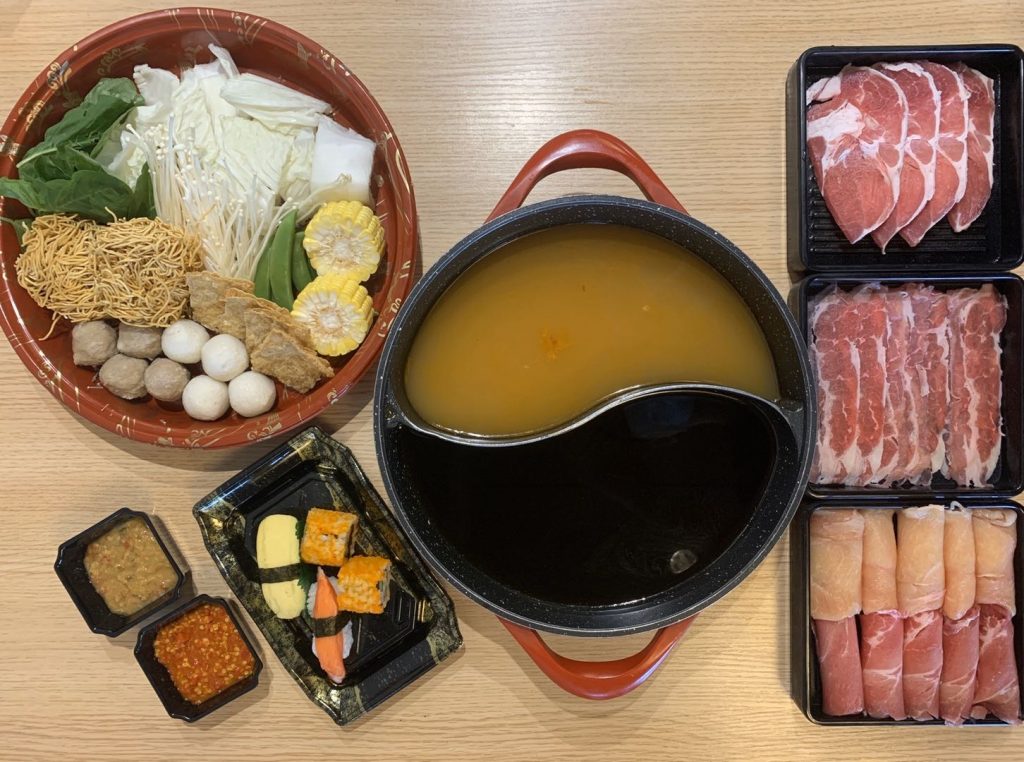
15. Shabu-shabu
Shabu-shabu is a hotpot dish that’s a big part of Japanese food culture.
Basically, you cook your food at the table in a large heated pot with boiling water or broth. Some hotpots are split in half, like in the above photo, with each side having a different broth.
Most platters come with a variety of vegetables, seafood and thinly sliced meat, as well as dipping sauces, spices and garnishes so you can play with the flavours and heat.
Shabu-shabu is a fun Japanese dining experience to enjoy with friends and family. The idea is that you take your time and socialize around this bubbling hotpot. You dip your meat or vegetable as needed, rather than all at once. It’s a must try Japanese cultural experience for your Japan holiday.
16. Okonomiyaki
Okonomiyaki is a Japanese savory pancake with a variety of ingredients.
It’s a popular food in Japan for tourists because it’s a uniquely Japanese. There are different types of okonomiyaki throughout Japan, with toppings and batters varying depending on the region.
Okonomiyaki is mainly associated with the Kansai or Hiroshima areas of Japan, though it’s said to have originated in Osaka. It is sometimes compared to an omelette and may be referred to as a Japanese pizza or Osaka soul food.
The Kansai style okonomiyaki is the most common version found throughout Japan and typically contains meat (thinly cut pork belly or bacon), octopus, squid, shrimp, vegetables, green onion, and/or cheese. We prefer the Hiroshima style okonomiyaki because we like the ingredients to be layered, rather than mixed.
There’s also a semi-liquid okonomiyaki found in Tokyo called monjayaki. The ingredients in monjayaki are finely chopped and mixed into the batter before frying.
Here’s a list of the best Okonomiyaki in Kyoto.
Issen Yoshoku is a famous okonomiyaki restaurant in Gion, Kyoto.
While the savoury pancakes are delicious, this okonomiyaki restaurant in Kyoto might be more famous for its statue at the front entrance. See photo below.
When we visited Kyoto a decade ago, we stumbled upon this funny statue of a boy getting bitten by a dog with his pants down in front of a restaurant. We thought it was an odd statue, so we took a photo.
When we returned last year, we stumbled upon it once again, by pure chance. Of course, we had to take another photo to capture the memory. This time, the boy is wearing a Japan rugby jersey because we visited for the Japan Rugby World Cup.
While thousands of people may have a photo of this strange statue, few will have a photo of it decorated for the Japan Rugby World Cup.
Related – Our experience at the Rugby World Cup in Japan
17. Kare Raisu (Japanese Curry Rice)
When we think of Japanese food, rarely does curry come to mind. That’s why we were surprised to see how popular kare raisu is throughout Japan.
Japanese curry rice tastes different from the curry you find in India or Southeast Asia. The main ingredients for Japanese curry are a variety of meats (chicken, pork or beef), vegetables (onions, carrots and sweet potatoes/yams) and spices. We found Japanese curry to taste more like a thick gravy with a curry flavour.
We’re told that kare raisu is a good example of yoshoku, which takes dishes from Western culture and adapts them to meet Japanese tastes and preferences (fusion cuisine). Japanese curry rice is an inexpensive Japanese dish that can easily be found throughout Japan.
We enjoyed Japanese curry rice for lunch when we visited Tokyo Disneyland.
18. Bento Box
If you have not tried a Japanese bento box, you are missing out.
There are literally hundreds of varieties of bento boxes in Japan. A bento box is typically a single portion takeout or prepackaged meal, however you can also order bento boxes at restaurants. A typical bento box has a balance of dishes, most often including rice, meat or fish, and pickled vegetables.
We often order bento boxes for lunch at sushi restaurants because they offer a variety of items to sample.
During our travels in Japan, we would pick up bento boxes and bring them back to our hotel room or apartment rental. They are convenient, inexpensive and mostly healthy. Bento boxes are also a great way to sample a variety of side dishes that you might not have ordered otherwise.
19. Oden (Japanese one-pot dishes)
Oden is an interesting part to Japanese food culture. It’s a common food in Japan that gets mixed reactions from tourists and first time visitors.
Basically, oden is a type of hotpot with an assortment of vegetables and proteins, including sausages, processed fish cakes, mochi rice cakes, daikon radish, konjac yam, tofu, and boiled eggs, to name a few. These items are stewed in a light broth and served to order. Ingredients vary according to region.
As a tourist, we had a hard time deciphering each item. In the photo above, this restaurant has a variety of items soaking in a hot broth. Guests walk up to the window and order items to take home.
Oden at Convenience Stores in Japan
Most convenience stores in Japan will have oden during the winter months. You typically find this food at the front of the store, near the cashier. The most common convenience stores in Japan are Seven Eleven, Lawson and Family Mart.
You will find at least one of these convenience stores on virtually every block in the city. Purchasing premade food items at convenience stores is an easy way to travel cheap in Japan.
In some stores, an employee will serve you. In other stores, you help yourself. You simply take a bowl and add the specific items you would like. It’s common to add broth to the bowl to keep your items hot.
20. Street food at Japanese markets
There’s no shortage of interesting Japanese cuisine at food markets in Japan.
We like visiting markets when we travel because they provide insight into the food culture of a country. They typically have several vendors selling a wide variety of food items, so they’re a great place to let your curiousity run wild.
Some of the popular temples in Kyoto have rows of vendors selling grilled meats and traditional Japanese quick eats, like yakitori, grilled squid (above photo), takoyaki, hanami dango (sweet rice balls) and deep fried pastries.
If you’re looking for food to try in Tokyo, check out this list of the best food markets in Tokyo.
Nishiki Market in Kyoto
Known as Kyoto’s Kitchen, Nishiki Market is a great place to sample food in Japan. It’s a narrow, five block long shopping street that specializes food related items, like fresh seafood, grilled meats, produce, pickled food, dried foods and sushi.
If you’re unsure of what to try in Kyoto, Nishiki Market is a great place to start.
Ready to eat sea urchin at Nishiki Market.
Grilled wagyu beef on a skewer at Nishiki Market in Kyoto.
This vendor is selling a variety of steamed and fried food on a stick.
We like visiting small food vendors that sell a wide range of bite size items. It’s quick and easy way to try several different items.
Most vendors at Nishiki Market have English menus, which makes it easy for tourists to understand what they’re ordering. Each item costs between 400-800 yen, which is about $5.00 to $10.00 CAD.
He’s not sure about these interesting food items on display at the market.
Sweet baby octopus with an egg brain?
One of the most popular and eccentric street food snacks found at Nishiki Market is Tako Tamago, which is a little red octopus on a stick.
The glazed baby octopus have a quail egg stuffed into the head, which makes for a unique flavour combo. The baby octopus has a sweet, candy-like flavour and the egg has a mushy, hard boiled egg texture. It’s quite rubbery and chewy. Not my favourite, but not too bad, either.
It’s certainly one of the more unique foods to eat in Japan, though I’m pretty sure most tourists purchase these little red octopus on a stick for the novelty. Because, let’s be honest, it’s not every day you get to eat an entire octopus on a stick, am I right?
Dozens of vendors sell the popular red octopus on a stick at the popular Kyoto market.
Another strange food in Kyoto is the grilled sparrow bird on a stick.
We’re told that grilled sparrow is a Japanese delicacy, but we couldn’t stomach eating this bat-like bird on a stick.
Have you tried grilled sparrow on a stick? Did you like it? Leave us a comment below.
Salted fish on stick? This particular item stood out to us because we don’t often consider eating an entire fish, including the skin, tails, eyes, gills, bones, etc. I’m sure there’s a graceful way to tackle this fish without consuming everything, although I’m not sure this fish stick is for me.
Dango is a popular Japanese sweet dumpling, similar to mochi. It’s typically served on a skewer with 3 balls per skewer. We sampled these green dango skewers near the entrance to Fushimi Inari Shrine in Kyoto.
Matcha sweet rice cake on display at Nishiki Market. Matcha green tea is a big part of Japanese cuisine. You will find matcha flavoured everything in Japan, from chocolate bars to potato chips to ice cream.
Is it okay to walk and eat in Japan?
Unlike North America, it is considered rude to walk and eat at the same time.
First time visitors to Japan will quickly learn that walking and eating in Japan is frowned upon. If you purchase food from a market or street vendor, the expectation is that you will NOT walk down the street or market while eating your food.
This applies to food purchased at convenient stores, like 7 Eleven and Family Mart. It is acceptable to eat at the place of purchase or close to the store. There’s usually a designated area for eating. If not, you will need to find an acceptable place to eat your food or bring it back to your hotel and eat it there.
Park benches in public spaces are generally okay, but avoid eating messy or strong smelling foods. It is also acceptable to drink while standing beside a vending machine.
Eating and drinking on local trains and public transportation is frowned upon. However, eating food on long distance express trains, like the Shinkansen, is acceptable.
Learn about the Do’s and Don’ts of Japan travel.
Do NOT tip at restaurants
One of the most common questions for first time visitors is – do you need to tip in Japan?
Tipping is not expected in Japan. In some cases, it’s actually considered to be rude.
This is one of the best Japan travel tips we can give – you do NOT tip in Japan.
Food from convenience stores in Japan
We rarely eat at convenience stores in Canada, unless we’re on a road trip or there aren’t other food options available. In Japan, eating at convenience stores is quite common.
Japanese convenience stores have a good selection of prepared food, from sandwiches to bento boxes to baked goods. We often grabbed prepackaged sandwiches (picture above) and pastries for breakfast each morning.
One of the most popular snacks to eat in Japan is Onigiri. Onigiri are rice balls formed into triangular or round shapes and wrapped in seaweed (nori). Some are filled with fish (tuna, salmon, mackerel, shrimp, etc), chicken, pork, vegetables, egg and fried food, like tempura and tonkatsu. Onigiri is a cheap Japanese food that’s is easy and widely available at almost every convenience store in Japan.
Variety of prepackaged sushi rolls and nigiri combos at the Kyoto train station.
Convenience stores in Japan have plenty of prepackaged meals available for takeaway.
Japanese Breakfast at Hotels
I though it worth mentioning the hotel breakfast situation in Japan, given that many European travellers expect breakfast to be included with the hotel price.
Depending on your hotel, breakfast may be available. But don’t expect breakfast to be included in the hotel room price. Some budget hotels will not have breakfast available at all.
Japanese breakfast is quite different from North American and European breakfast.
Typically, a traditional Japanese breakfast consists of steamed rice, miso soup, grilled fish and a variety of side dishes. You will find a lot of pickled vegetables, garnishes, dried food and other items that you might not associate with breakfast.
This is a great way to sample new flavours and items you might not order at a restaurant. Ask questions and give the Japanese breakfast items a try. You never know, you might just like fermented soy beans (natto) and dried horse mackerel for breakfast?
The breakfast buffet at the Hotel Gracery Tamachi in Tokyo.
Order your food from a Vending Machine
One of the things we love about Japan is that everything is efficient and convenient. A perfect example of this efficiency is the electronic vending machines located outside many Japanese restaurants.
The touch screen machines often have photos of each dish, which is convenient and avoids the potential language barrier that may arise if you had to order from a server who does not speak English.
The process is simple. You select the food you want from the touch screen machines, pay with cash or credit card, grab your receipt and head inside. The food is then delivered to your table or your number is called and you pick it up from the counter.
Once you are finished eating your meal, you simply get up and leave. No need to wait for a server to bring the bill or wait to pay. It’s a very efficient system that removes service breakdown.
Food in Japan for kids
If you’re travelling to Japan with kids, you’re liking concerned about whether your kids will enjoy the food in Japan. There’s nothing worse than constantly battling your kids to eat.
Our boys like Japanese food, so we knew they would like eating at Japanese restaurants. However, our concern was that after a few days they would get bored and start complaining.
Fortunately, Japanese food is quite diverse and, as you’ve seen in this beginner’s guide to food in Japan, there are plenty of options to choose from.
Travel tips for eating in Japan with kids
- Shop at convenience stores. Pick up prepackaged food, snacks, pastries and drinks from convenience stores and bring them back to your hotel room. You don’t have to dine out for every meal. Give yourself a break if your kids are burnt out.
- Vending machines are everywhere in Japan. Keep some change in your pocket because you’ll find these vending machines do the trick when your kids are thirsty.
- Look at the plastic dishes in the window. Most Japanese restaurants have plastic replicas on display. Let your kids see the available options and pick a dish that interests them before you enter the restaurant. That way there’s no confusion over what to order when you sit down.
- Download Google translate. When you have a Lost in Translation moment, ask the Google for help.
- Eat breakfast in your hotel room. We purchased a bag of Frosted Flakes from a Family Mart and our boys had cereal for breakfast each morning. It saved us time and money.
- Bring snacks from home. Pack your luggage with your kid’s favourite snacks, treats and cereal. Sometimes a familiar treat is all it takes to get your kids feeling normal again.
- There are lots of fast food restaurants in Japan. Sometimes chicken nuggets from McDonald’s is the answer. We get it. Don’t worry, Japan has most of the big names in fast food. It’s okay to give yourself some comfort food from home when you’re travelling.
Read these helpful Japan travel tips for first timers.
For an easy introduction to sushi, order your kids the cucumber roll (kappa maki) with a miso soup. Let them play with the chopsticks and experiment. If they don’t like the sushi roll, no big deal. These are typically the cheapest items on the menu.
Most Japanese restaurants that serve chicken karaage will also have French fries on the menu. We told our boys that we ordered them chicken nuggets and fries. They rarely noticed the difference.
Our boys did pretty good at trying new food. Like most kids, their natural default is to resist food that is different or foreign. However, the more Japanese food they tried, the more comfortable they got.
Don’t worry, if your kids don’t like the food in Japan, there’s always donuts!
And that’s a wrap! We hope you enjoyed this tasty beginner’s guide to food in Japan.
More blog posts from our trip to Japan:
Have you visited Japan? What is your favourite food in Japan?
Leave a comment below. Our readers thank you!
